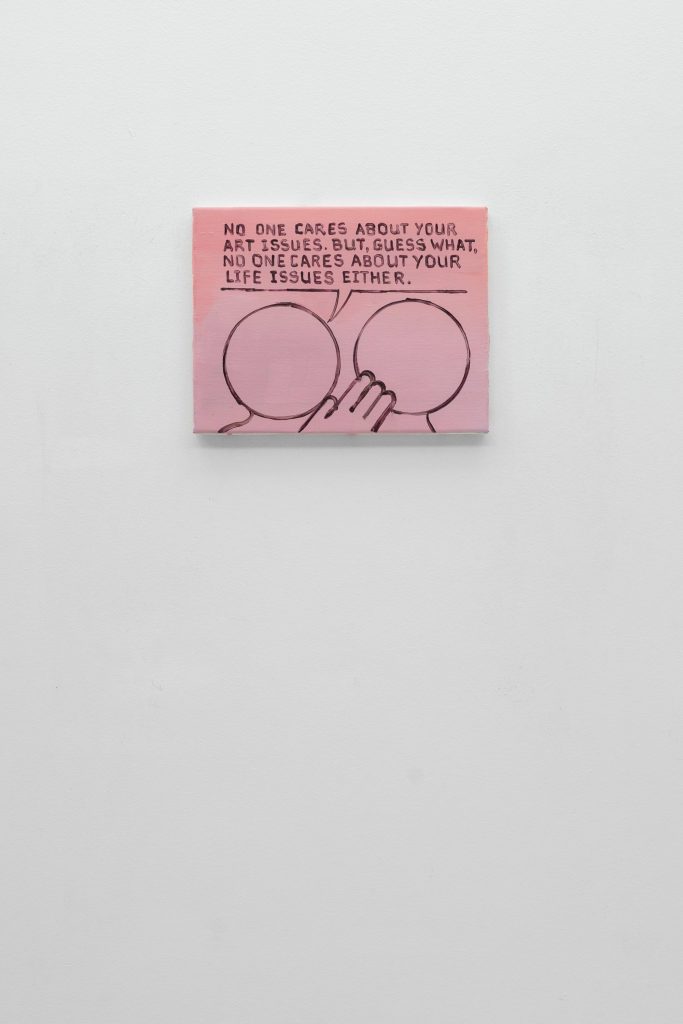3 UNDER 40
Isabel Servera, Juan Narowé, Jan Monclús
With the aim of continuing our journey towards the representation of new and up-and-coming artists, we developed a project that showcases the artworks by three artists who, despite having a solid career and a clear vision, are still at the threshold of their creative path. Three artists from different backgrounds and nationalities and who are under 40 years old, an age that has helped them to forge a clear discourse but that allows them to still have many years ahead of them to continue their intellectual and technical investigation.
We have given to each one of these three selected artists their own exhibition floor at the Palau de Casavells, with the idea of offering them the proper space to truly create an immersive experience that represents them and that shows their work on their own terms. Each exhibition floor is designed as a Solo Show, where the artists have developed a concept that is meaningful to them and their practice, including painting, collaborative installations, works on paper, sculpture, and video.
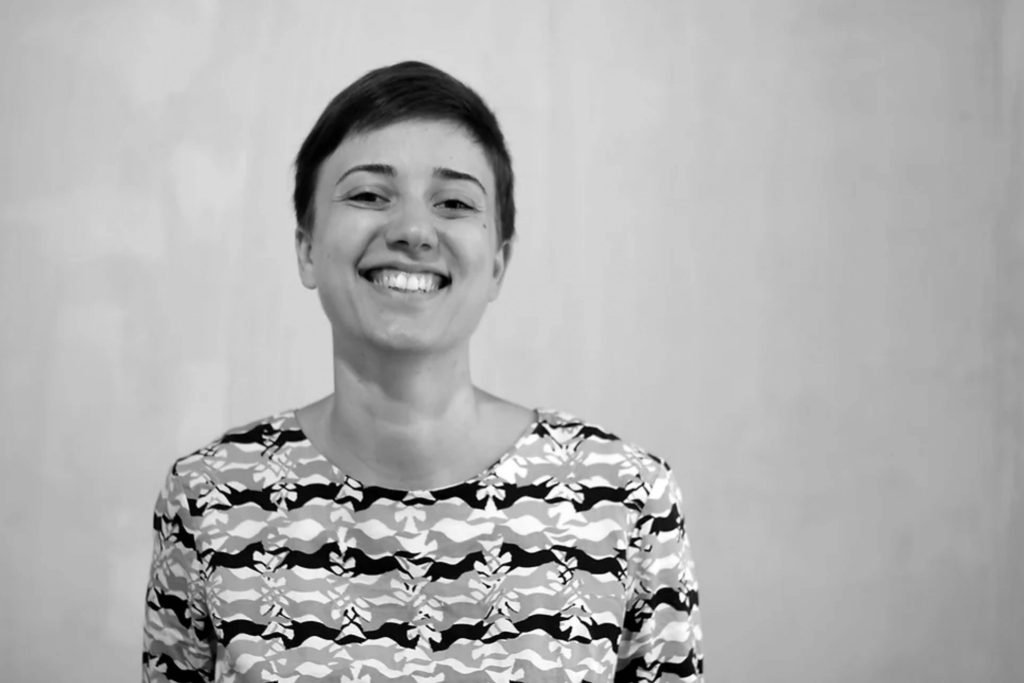
Isabel Servera (Artà, Majorca, 1986)
is a conceptual artist working with the pictorial practice and traditional processes, highlighting the artisan techniques of object making from her home town in Mallorca. Her work is an exploration of the limits of textile, painting, mark-making and drawing. She explores the limits of a media, yet pays homage to the original artisans and raw materials, introducing concepts such as collective creation and the idea of the artist as someone who does concrete actions. She proposes overall a dialogue between craft, art and painting.
ENCREUATS
The word encreuats refers to the situation in which two or more lines, paths or elements
intersect. In the context of the exhibition, it refers to the intersection of processes, ideas, materials and ancestral traditions with contemporaneity, proposing a dialogue between past
and present. These intersections also represent the collective memory, transmitted from
generation to generation, and the importance of preserving our roots and knowledge.
The solo exhibition that hosts the first floor of the Palace of Casavells, Servera proposes a
tour of the four rooms that form it:
Entrance
Vetleria (2023). The word designates the space where social gatherings were held to work the palm in the area of Capdepera and Artà, villages in the east of the island of Mallorca where the artist comes from. It is a collaborative piece made with palm strips braided by
hand by different people in the area. They are part of the Association Arte de la Pauma, incharge of preserving and keeping this tradition alive.
Room 1
Llatrar (2022). This second room collects the documentation and residues of the Llatrar project. This took place on Saturday May 14 during the Cool Days Festival in Artà (Mallorca) in the artist’s family home. It consisted of two proposals: on the one hand a participatory
performance and on the other, an exhibition intervention in the house (dating from 1800) in dialogue with the family legacy. Fragility, traditions, the manual, art, craftsmanship, memory, oblivion, death, life and time intertwine.
During the day, Servera carried out an 8-hour action in which he intertwined shredded
documents following the traditional process of the palm. On the other hand, she invited all the people who wanted to join her to «llatrar» (braid palms), proposing a shared space for
meeting, learning and exchange.
Room 2 and 3
A series of works made during the last years are presented. To begin with, pieces with a
direct link to the process of the palm work as Rotllana (2021-2022), an action made by the artist in which he braids 55m of paper following the weaving used in basketry. In addition to a series of pieces in which he reconstructs shredded documents DIN A4 (2023). For these she
uses different traditional fabrics from childhood memories: «llatró», «llatra de senalleta», «llatra teixida» and «puntes de quatre brins» (words that give name in the title of the pieces). All the
strips are braided by hand and sewn by machine, inspired by the work that his grandmother
did in her workshop, dedicated to the production of baskets and hats that were sold as
souvenirs of the island.
Finally, a series of works that refer to textile weaves. Using colored scales of markers or
adhesive tapes, Servera follows different linear paths until he covers the entire area of the paper. The action generates different patterns and mixtures of color, in which the weft and warp are intertwined.
The dialogue between artisan processes and pictorial language is a constant in his work.
Her interests are focused on posing diverse actions that involve manual processes of
repetition, accumulation and routine.


Vetllada
2023, Braided palmetto
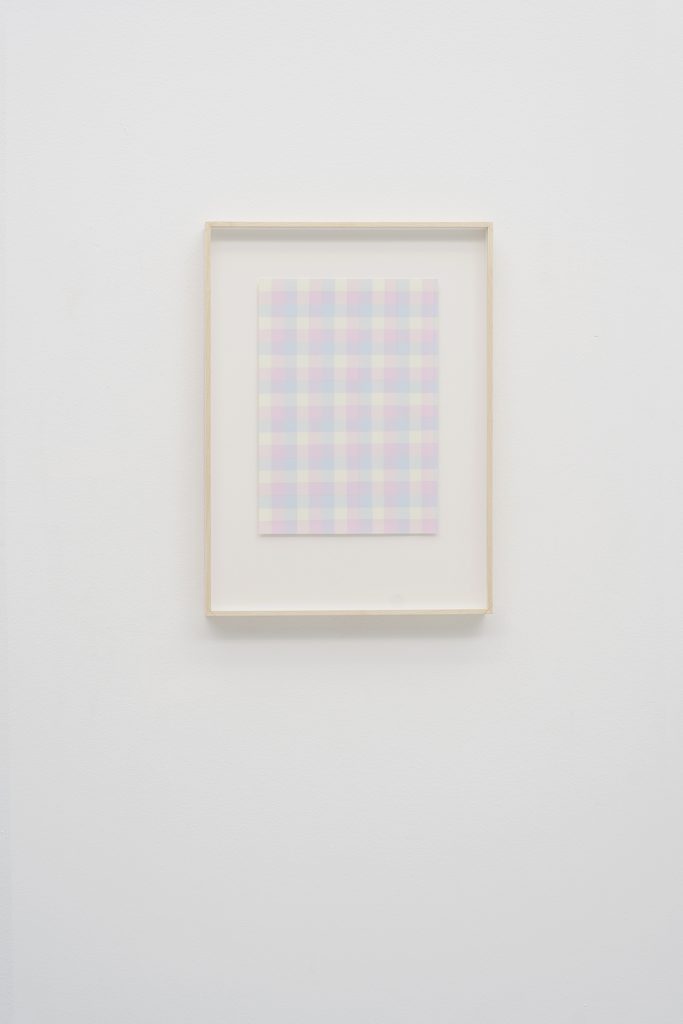
Trama CMY I
2023, Masking tape on paper
45,5 x 33,5 cm
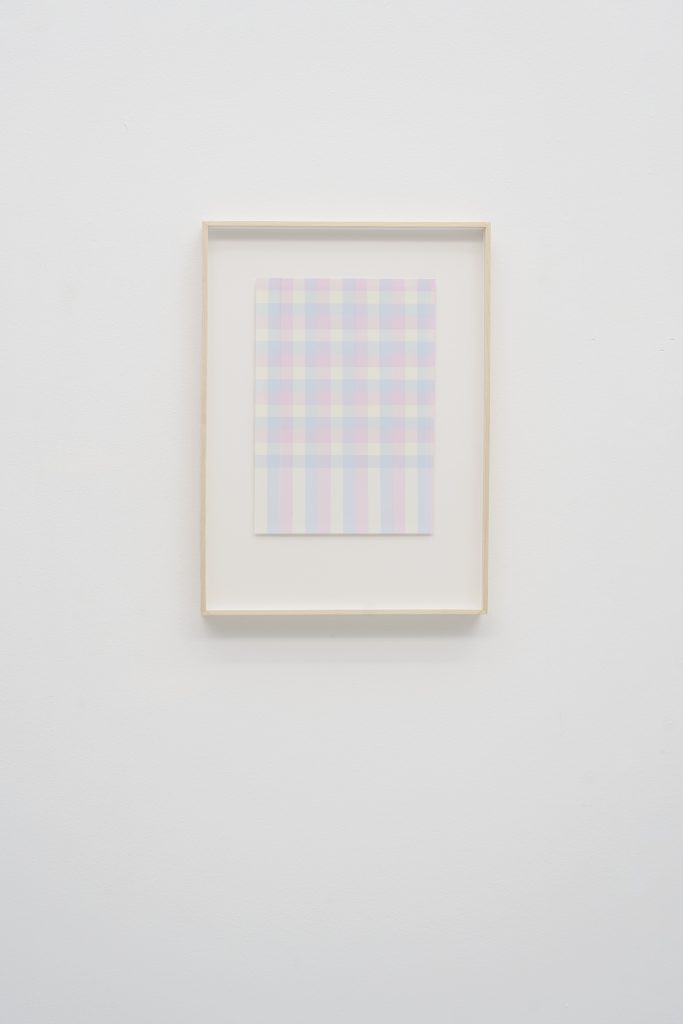
Trama CMY II
2023, Masking tape on paper
45,5 x 33,5 cm

Trama CMY III
2023, Masking tape on paper
45,5 x 33,5 cm
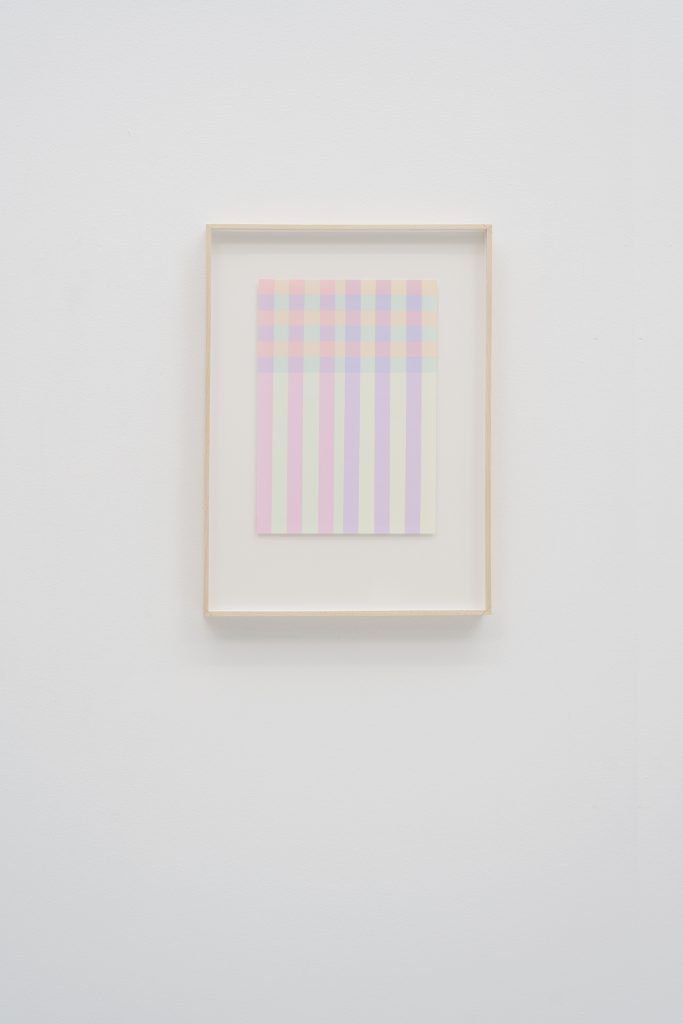
Trama neón IV
2023, Masking tape on paper
45,5 x 33,5 cm
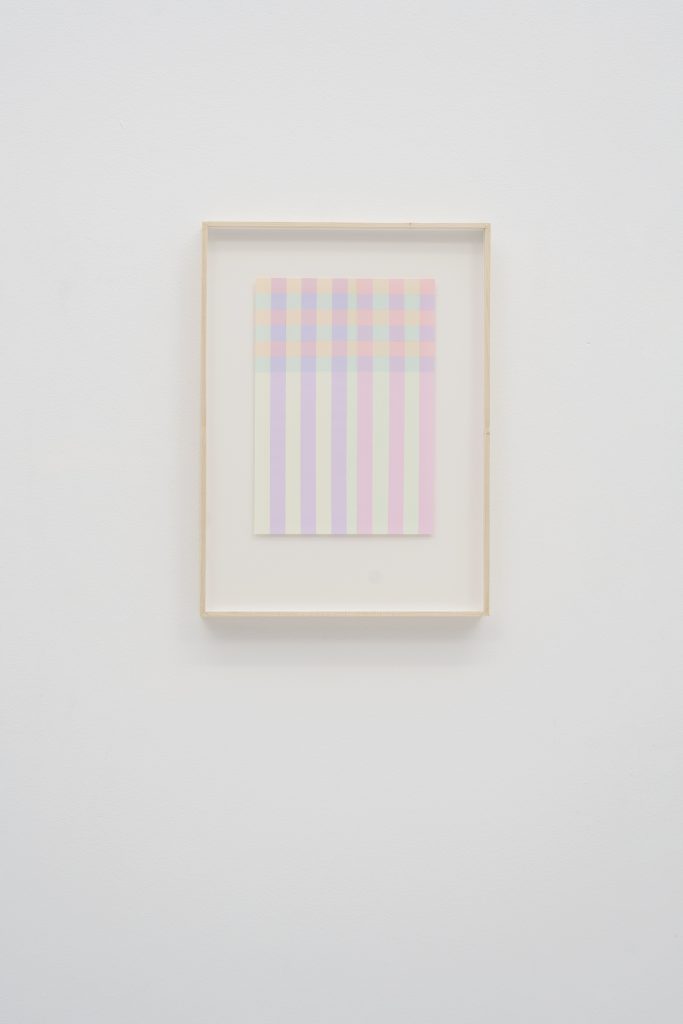
Trama neón III
2023, Masking tape on paper
45,5 x 33,5 cm
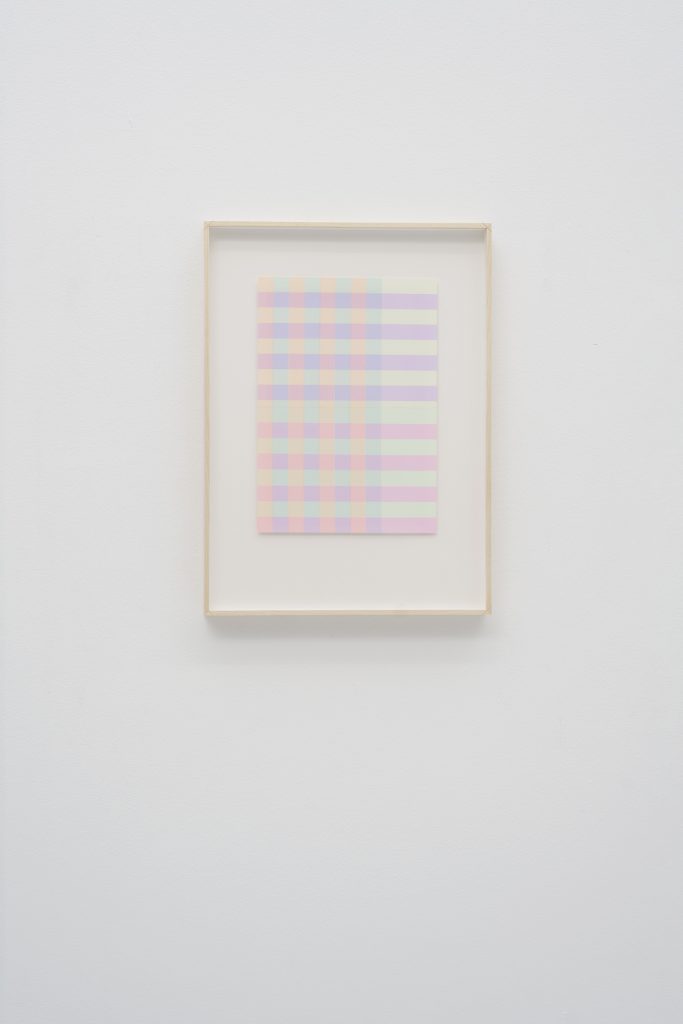
Trama neón VI
2023, Masking tape on paper
45,5 x 33,5 cm

Trama neón VI
2023, Masking tape on paper
45,5 x 33,5 cm

Rotllana
2021-2022, 55 meters of braided paper. 25 x 56,5 x 56,5 cm
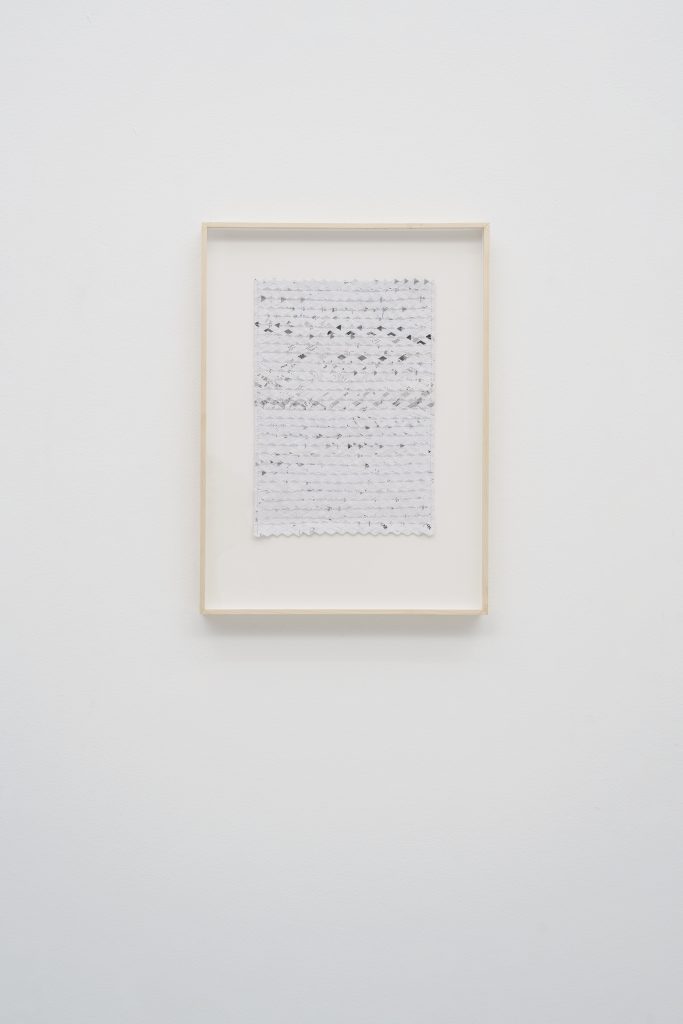
Puntes I
2023. Braided and sewn paper. 45, 5 x 33,5 cm
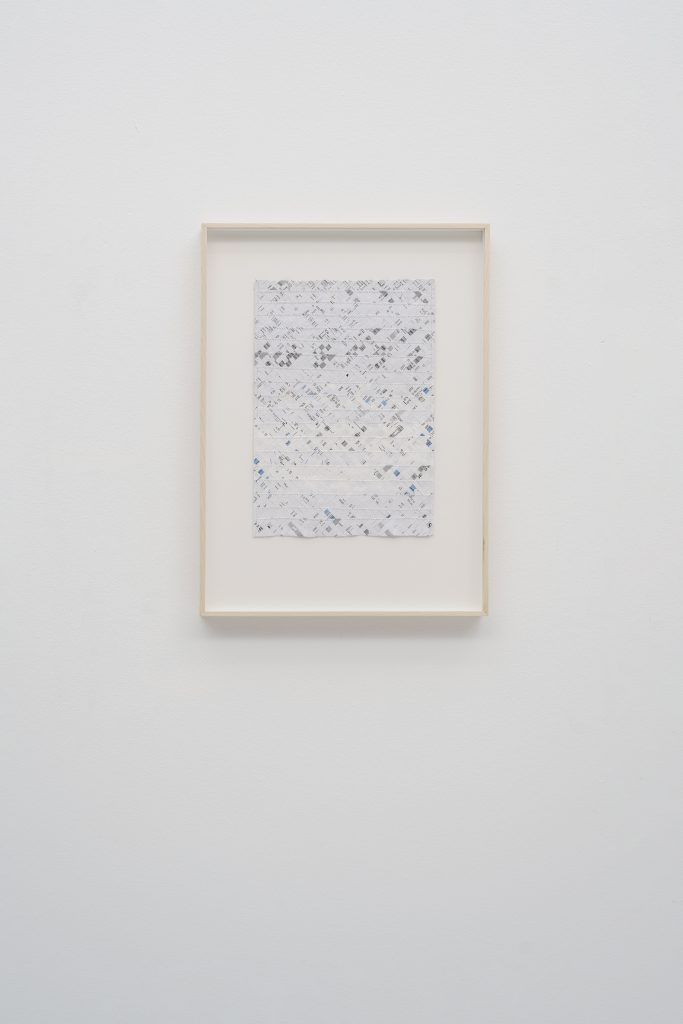
Llatró II
2023. Braided and sewn paper. 45, 5 x 33,5 cm

Llatró
2023. Braided and sewn paper. 45, 5 x 33,5 cm

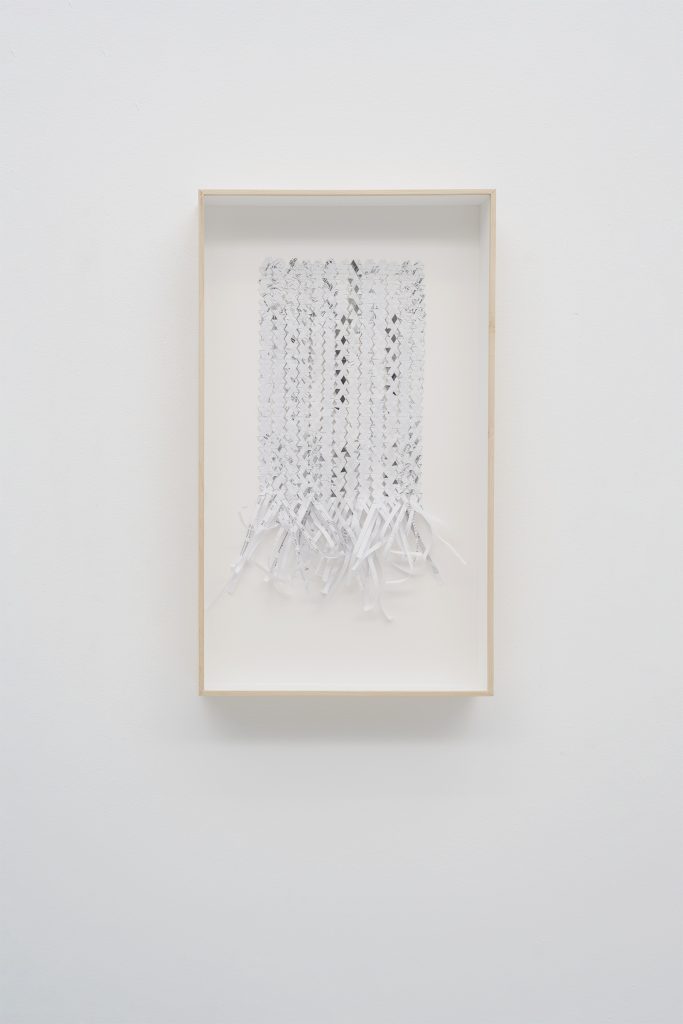
Puntes amb serrel
2023. Braided and sewn paper. 60,5 x 35,5 cm

Llatra teixida amb serrel
2023. Braided and sewn paper. 60,5 x 35,5 cm

Llatra amb serrel
2023. Braided and sewn paper. 60,5 x 35,5 cm

Llatró amb serrel
2023. Braided and sewn paper. 60,5 x 35,5 cm
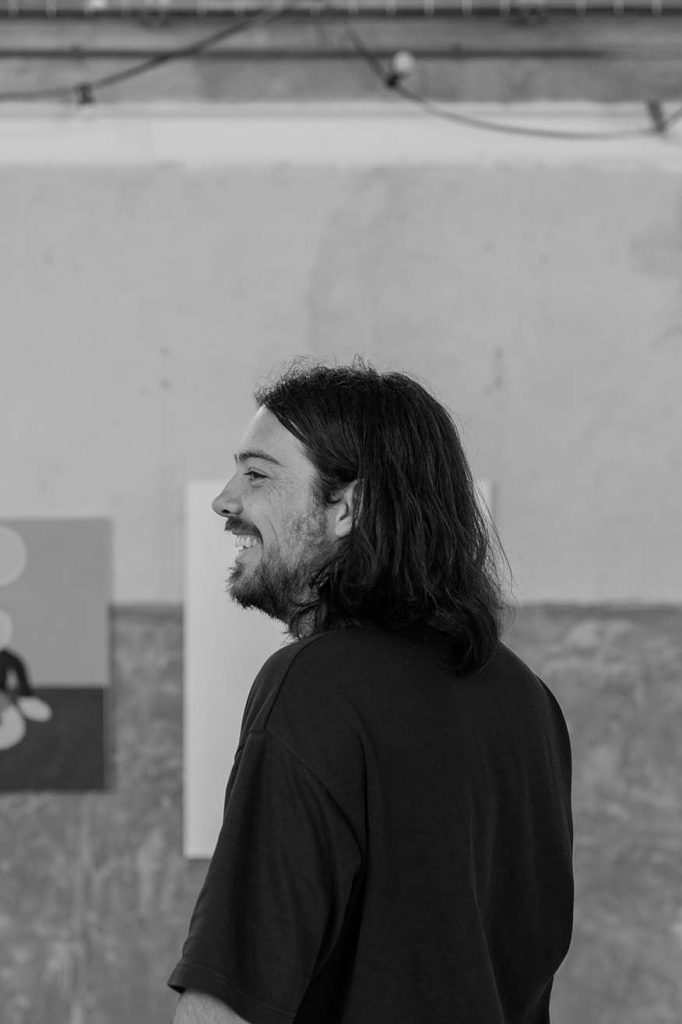
Juan Narowé (Mariana, Brazil, 1993)
plays with bright colors in a contemporary surrealistic dance that portrays feelings of displacement. Born in Brazil, now living in Barcelona, the artist meditates over the different connotations of being surrounded by loved ones that depart, sinuous figures that were there once but that only their shadow remains. The bright and vivid oil colors in contrast with colossal black figures that convey characters recorded only by memory.
PARTIDAS
Like the one who on the last hill – which shows him the whole valley once more – turns back, stops and lingers… – so we live, always in farewell
Octavia Elegia.
Rainer Maria Rilke
Something is expressed when we recognize beneath what is seen that which moved the matter. Expression is the foremost perception, preceding the material. Ex-pression is what emerges under pressure when something presses from within. Pictorial expression is the visible form of a feeling or state that the viewer identifies when looking at a painting. Something internal is revealed and comes forth. In Narowé’s works, we find that expression precedes matter; it is the initial perception and manifests when something presses from within, resembling a release that emerges, liberating what was internally contained.
In the «Partidas» series, Juan Narowe (São Paulo, 1993) unfolds a collection of drawings and paintings in various formats, constituting what we can refer to as a poetic of departure. Through archetypal images evoking farewell – the embrace, the raised hand bidding adieu, the departing traveler leaving the distant landscape behind – these works capture what Matisse termed the «condensation of feeling,» achieved through the schematization and simplification of figures to reach the very essence of the emotion expressed in departure.
Bergson, in «Matter and Memory,» asserts that the present is nothing but the «actual synthesis of all our past states,» or, in other words, that the past exists in a «condensed form» in our present, but for this, it is necessary for memory to be embodied in an image. Thus, in this poetic of departure proposed by Narowé, emotions are embodied in an image as pure expression of sentiment.
Departure inevitably evokes the recognition of the imminent emergence of distance, like the wanderer standing before Friedrich’s sea of clouds, once again, always anew, showing the entire valley and pausing. This sentiment materializes in the works of thinkers who appear in a state of tranquil melancholy, gazing at the unfolding sky or sipping wine under the full moonlight. It is a calm melancholy that, from a Rilkean perspective, could be considered an acceptance of temporality and the ephemeral nature of existence. Departure here is understood as an irrevocable path to continue our journey. In this way, Narowé confronts us with the duality that departure evokes: the longing for loss and the impulse to move forward.
Accepting departure as a condition of our temporality and transient nature, as Borges said, «The wave is the one that breaks and bursts into the present, but it is also the one that arrives and retreats.» Just as every dawn turns into dusk, every wave returns to the sea. We always depart with the eagerness to return to someplace.
In these works, this idea is reflected through the figure of the traveler-pilgrim-nomad. Walkers immersed in a continuous departure, always open to the possibility that lies ahead.
These figures possess an unfinished nature, but it is precisely in their incompleteness that their essence is formed. This aspect reaches its maximum expression in works where the form blurs to such an extent that the figure dissolves. Here, the inexplicable and uncertain reach their peak. Thus, in this poetic of departure – where the heterogeneity and diverse nature of the works make it difficult to arrive at very precise conclusions – an idea unfolds before us that could become a trigger for all of his work: embracing departure is embracing uncertainty and the uncertain, as a way of being and existing in the world.
Because, (and now I bid farewell, returning to the beginning with the verses of Rainer M. Rilke): «So we live, always in farewell.»
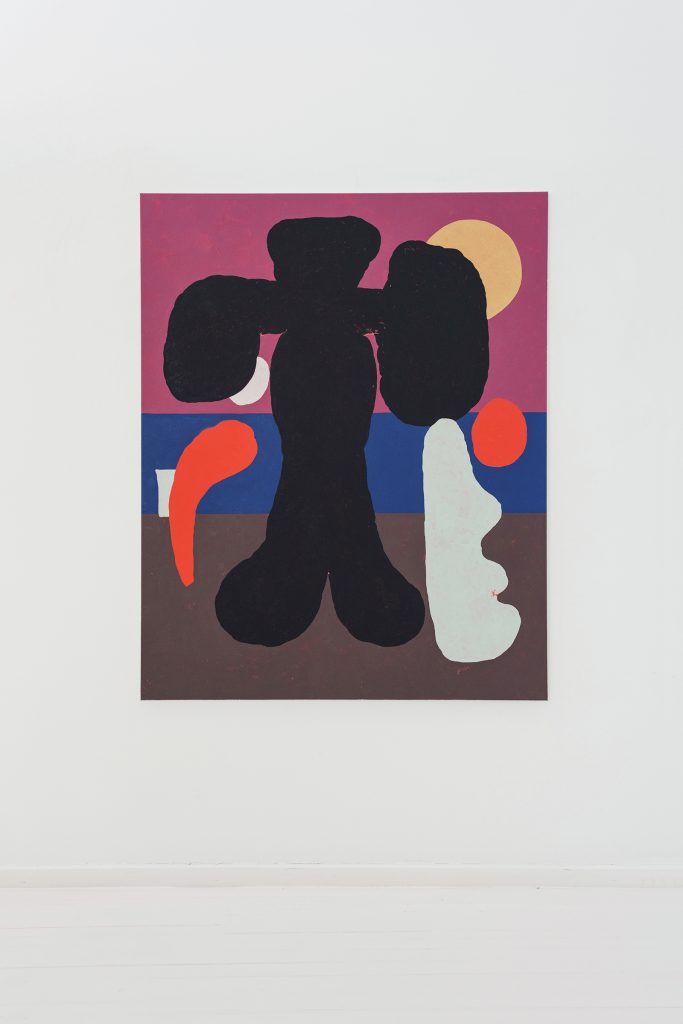
Untitled
2023. Oil on linen. 162 x 130 cm
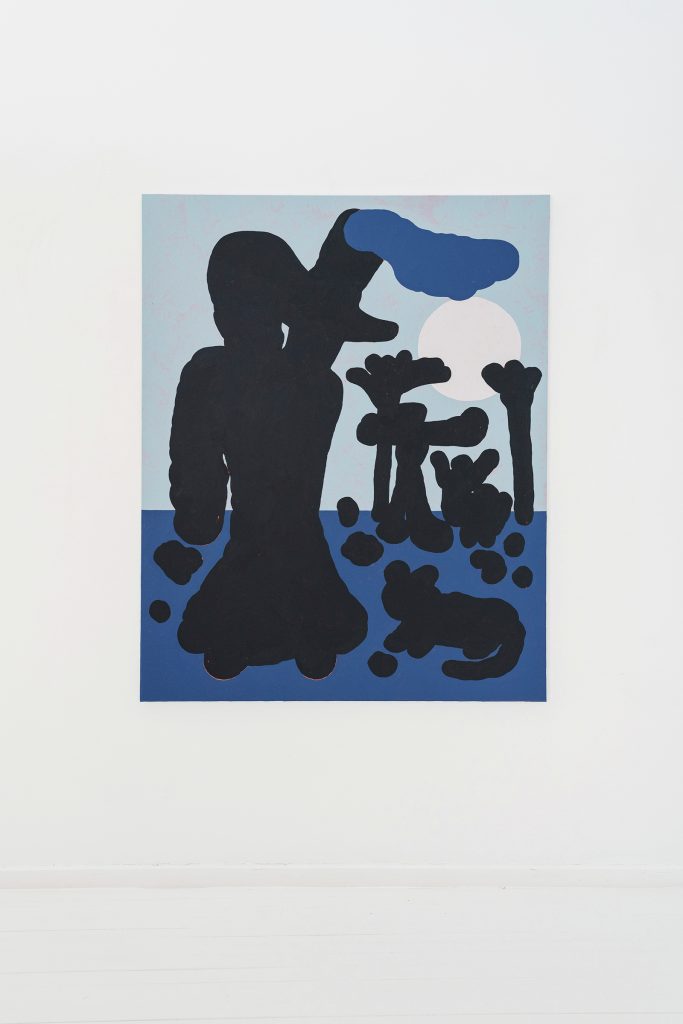
La despedida (II)
2023. Oil on linen. 162 x 130 cm
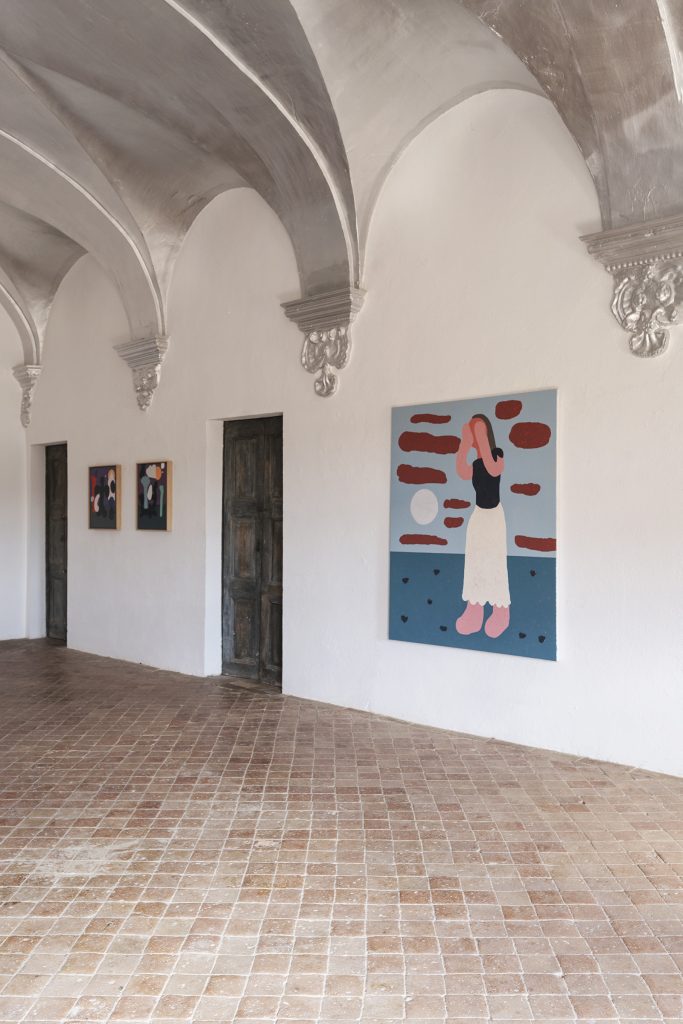
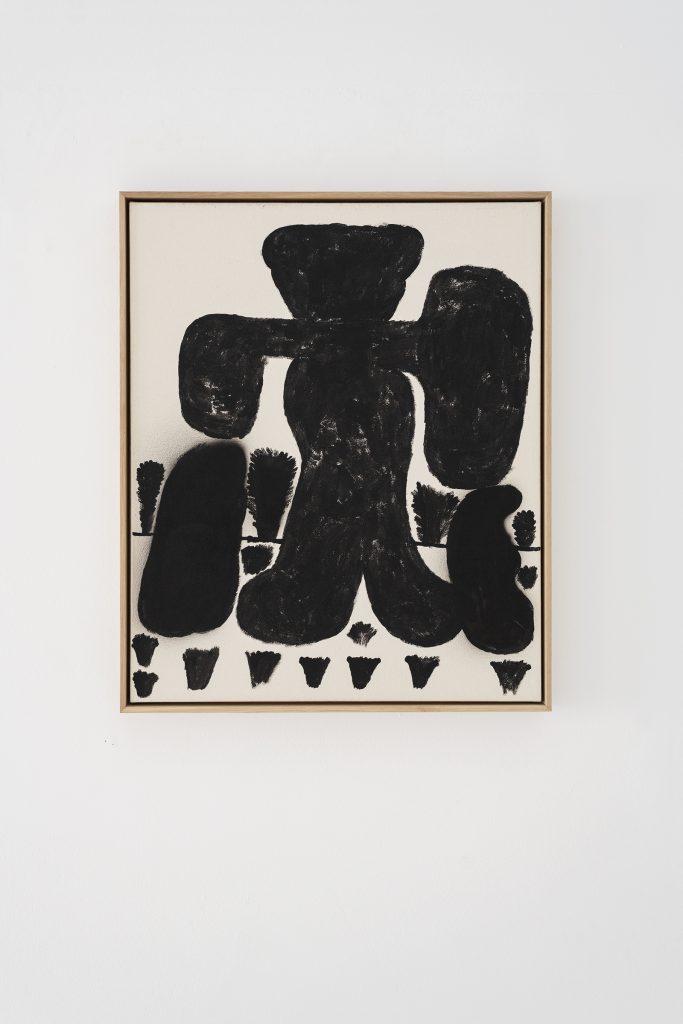
Untitled
2023. Oil on linen. 73 x 60 cm
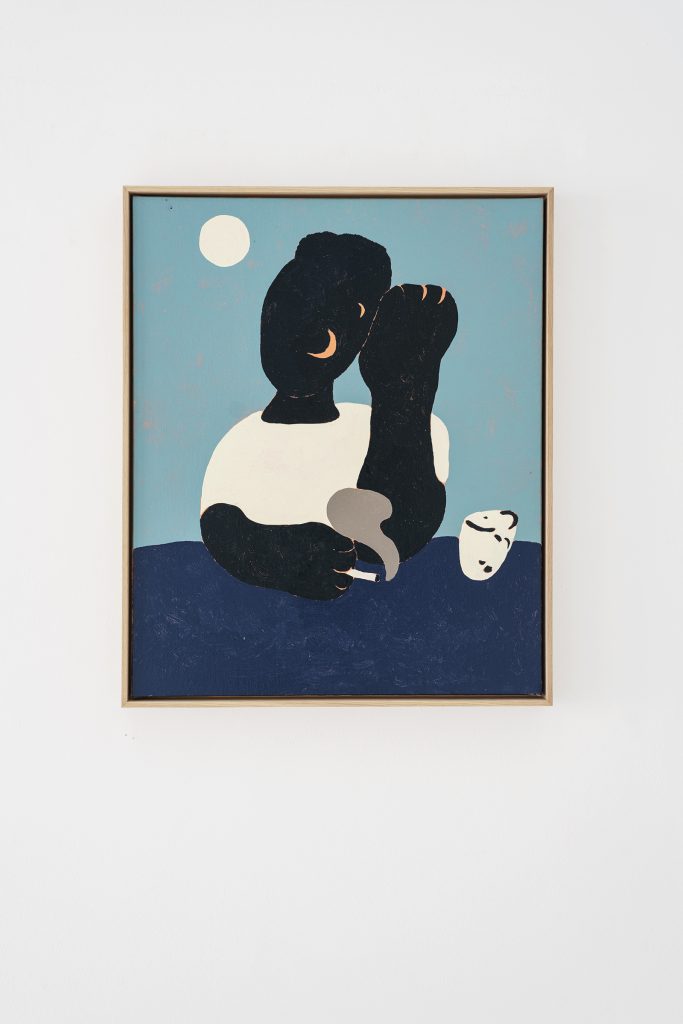
Soledad
2023. Oil on linen. 73 x 60 cm
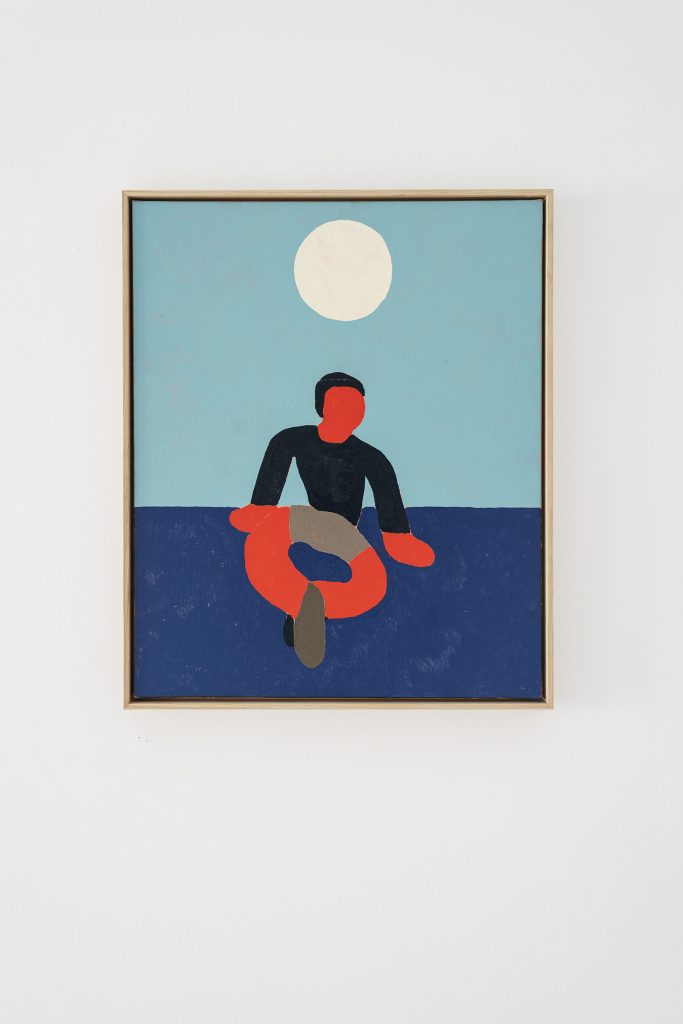
El pensador
2023. Oil on linen. 73 x 60 cm
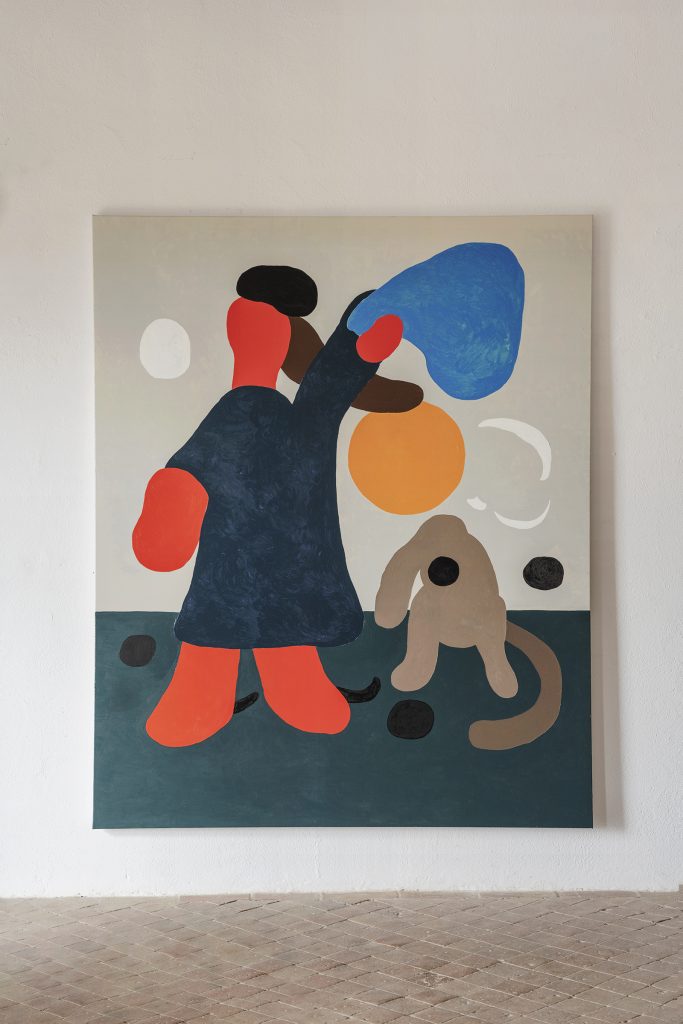
La despedida
2023. Oil on linen. 245 x 205 cm
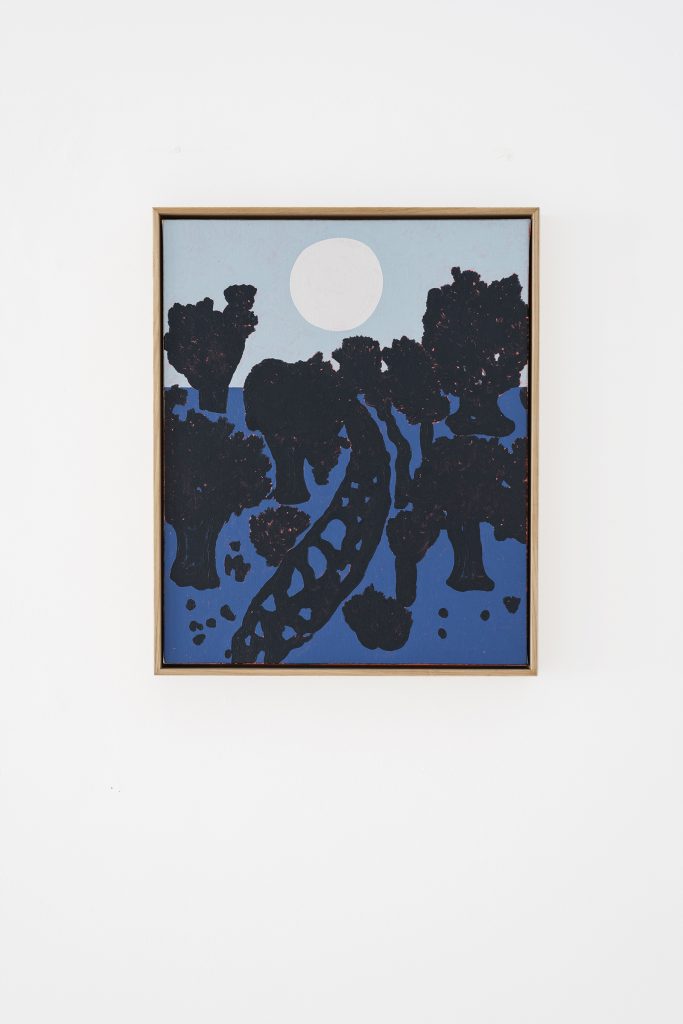
A la bartola
2023. Oil on linen. 61 x 50 cm
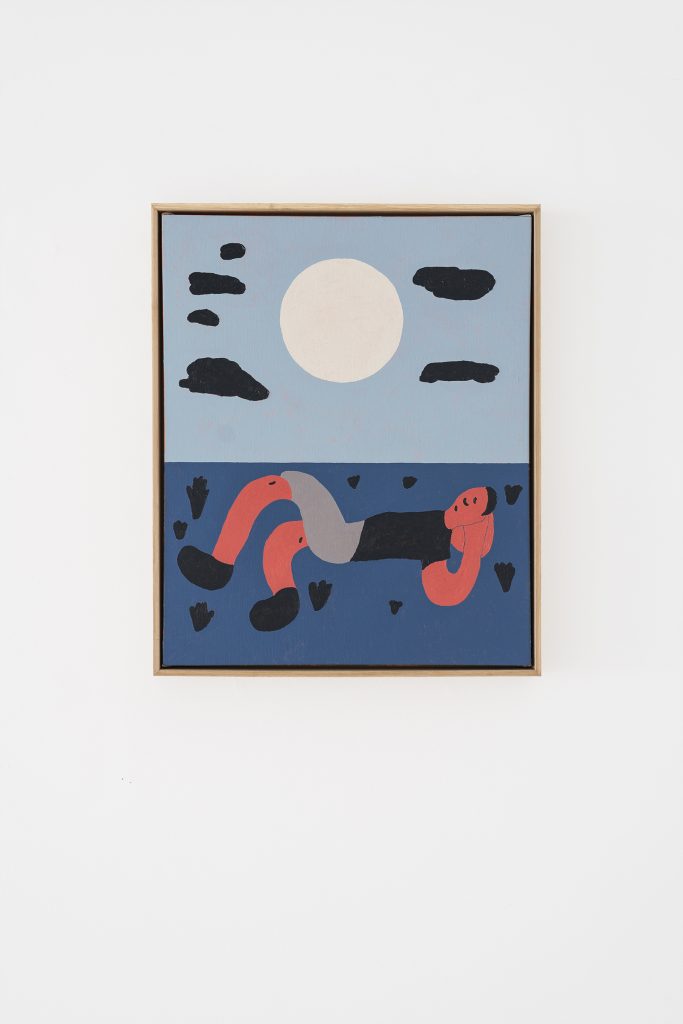
Untitled
2023. Oil on linen. 61 x 50 cm
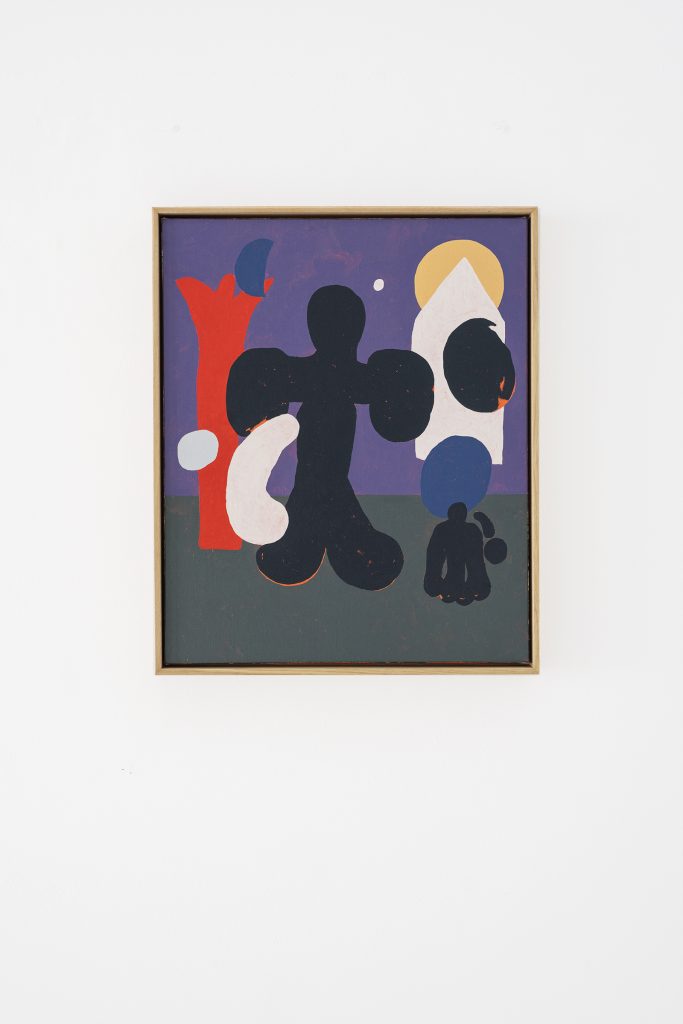
El camino
2023. Oil on linen. 61 x 50 cm
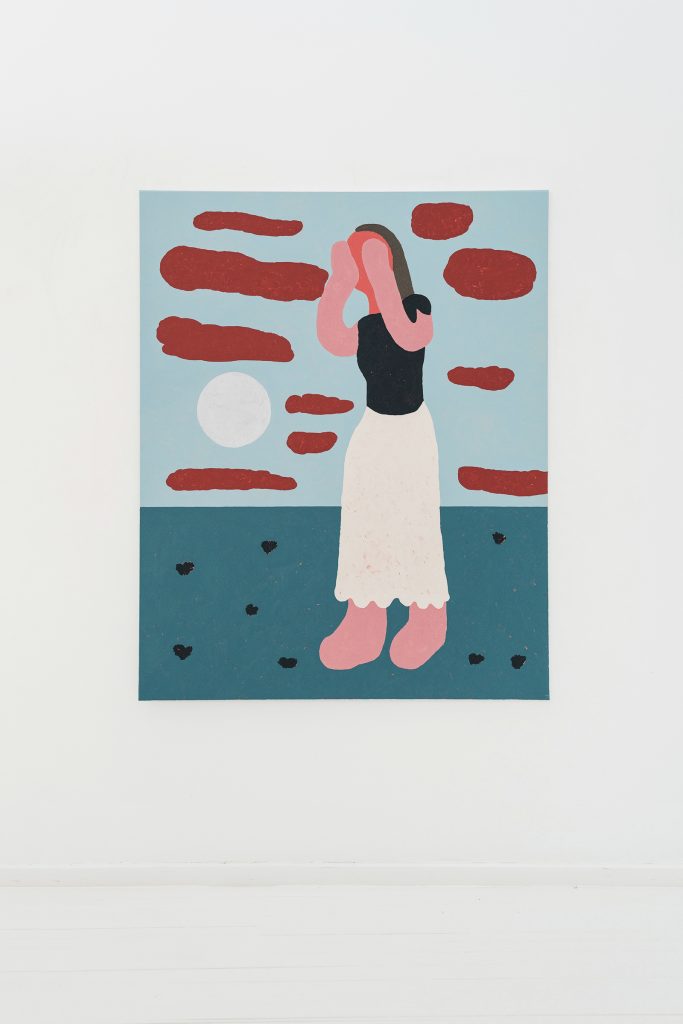
La partida (II)
2023. Oil on linen. 162 x 130 cm
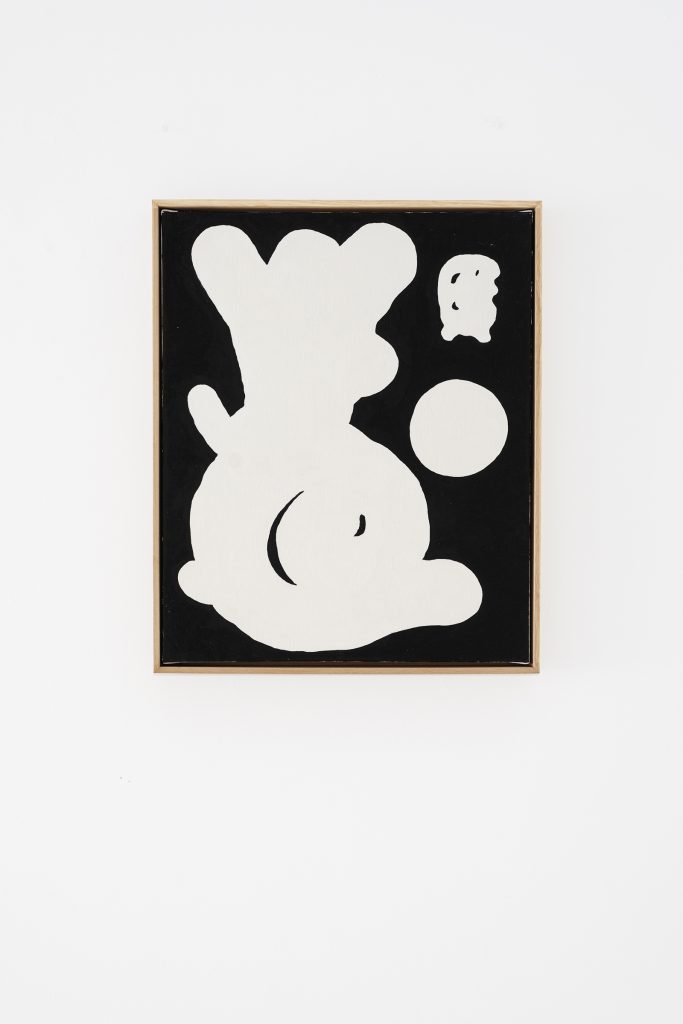
Claro de luna
2023. Oil on linen. 61 x 50 cm
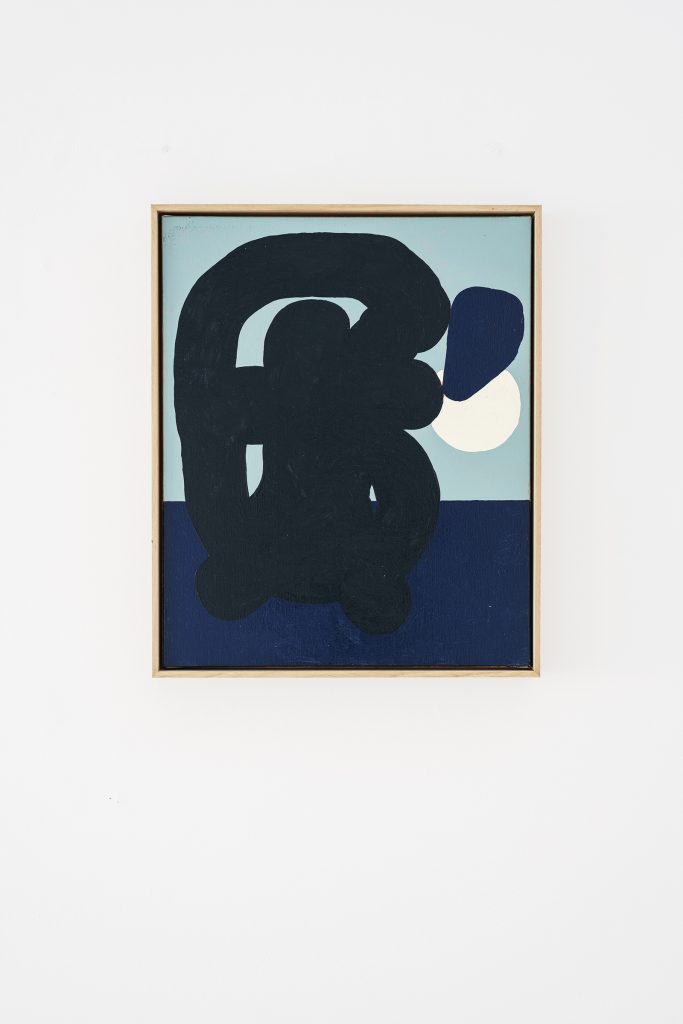
Siesta II
2023. Oil on linen. 61 x 50 cm
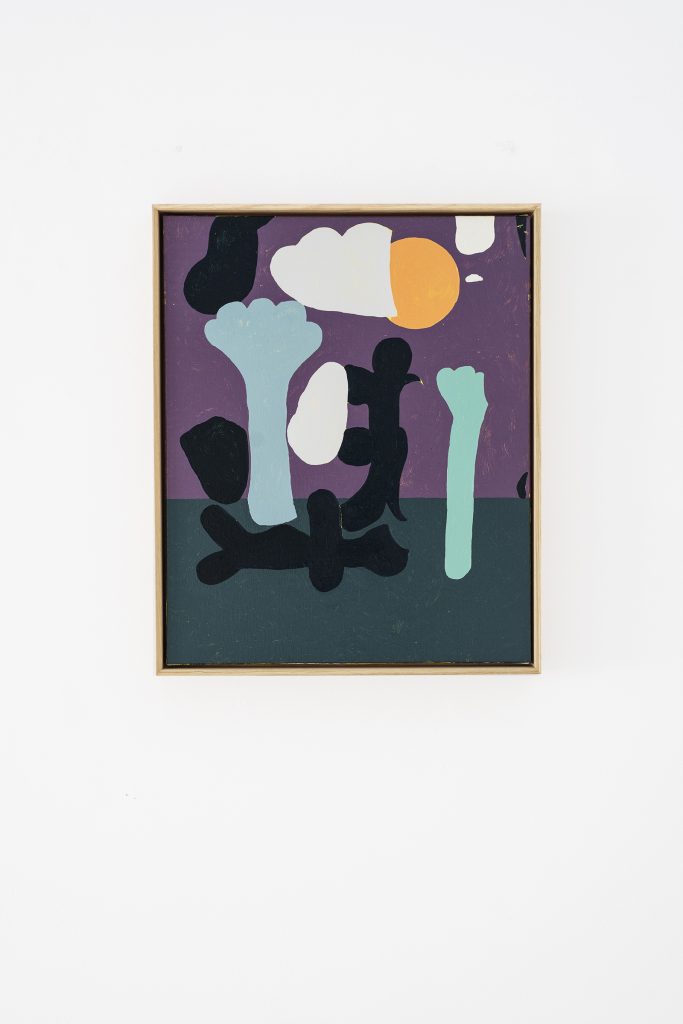
Untitled
2023. Oil on linen. 61 x 50 cm
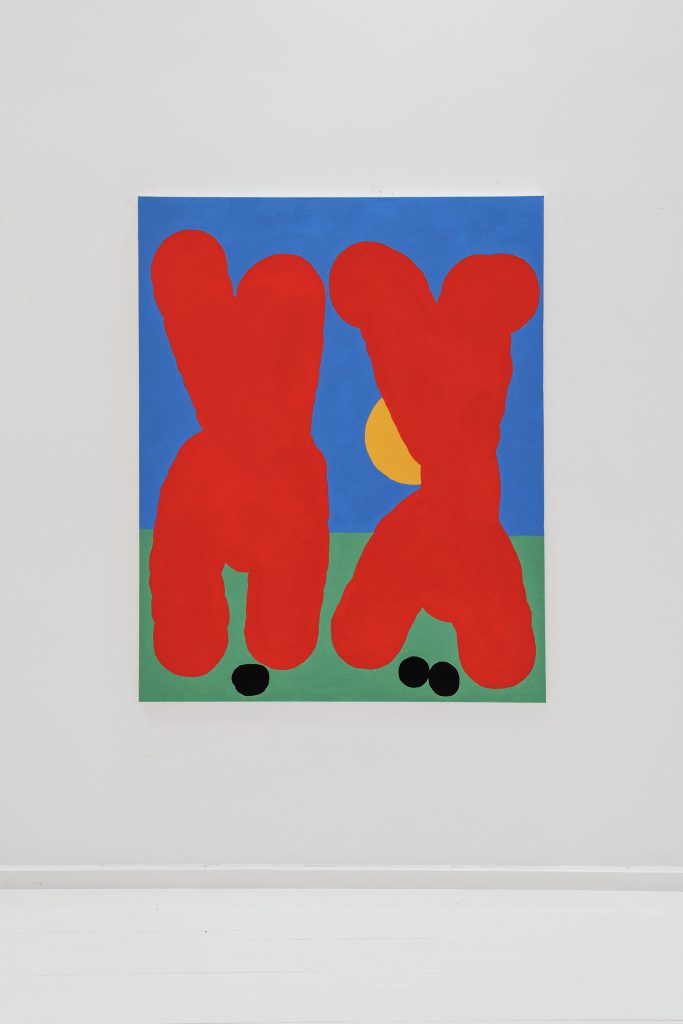
Untitled
2023. Oil on linen. 162 x 130 cm
Untitled
2023. Oil on linen. 162 x 130 cm
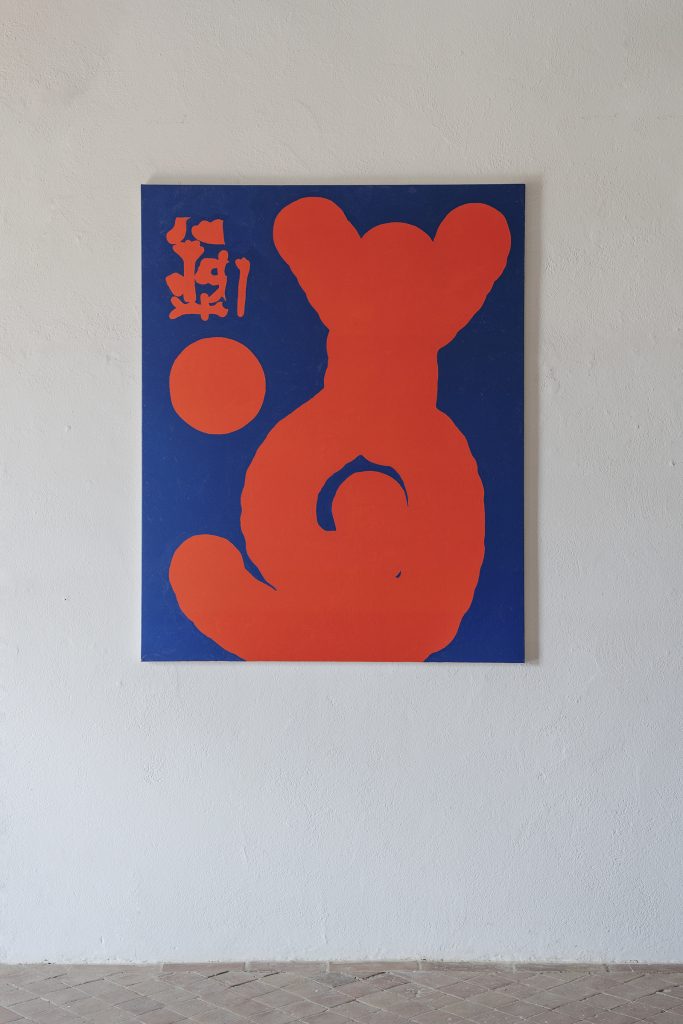
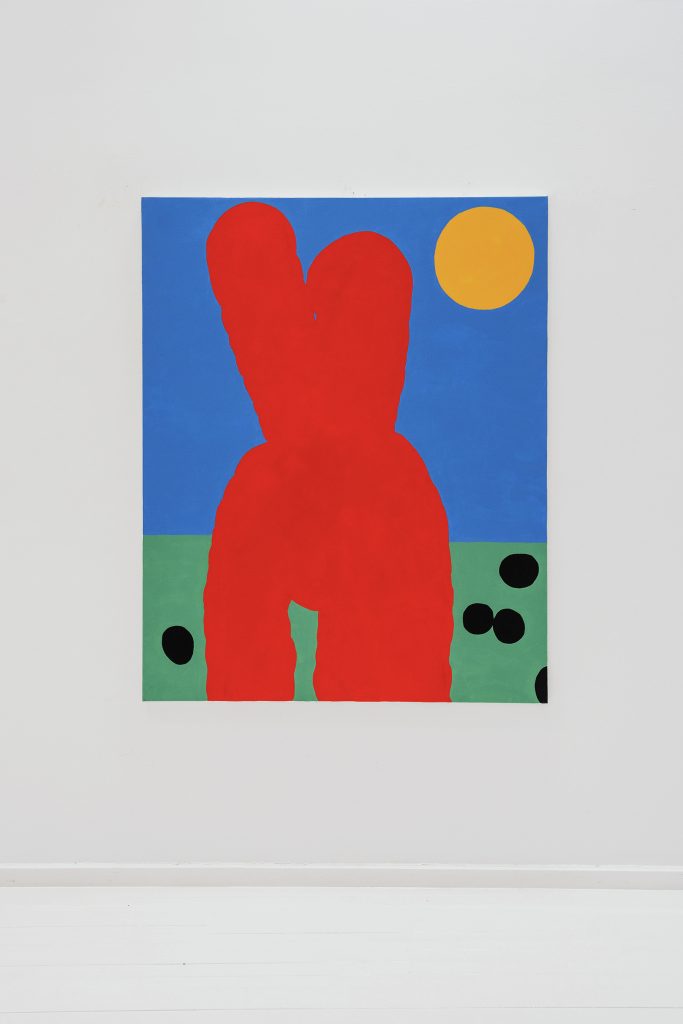
Untitled
2023. Oil on linen. 162 x 130 cm
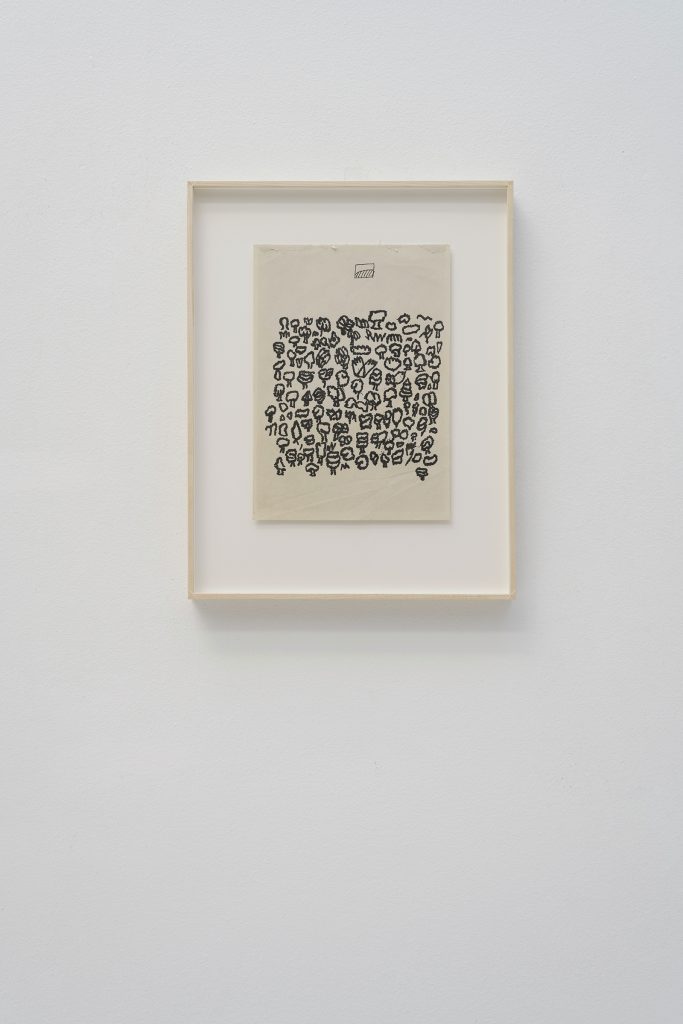
Paisaje
2018, Ink on paper. 38,5 x 30 cm
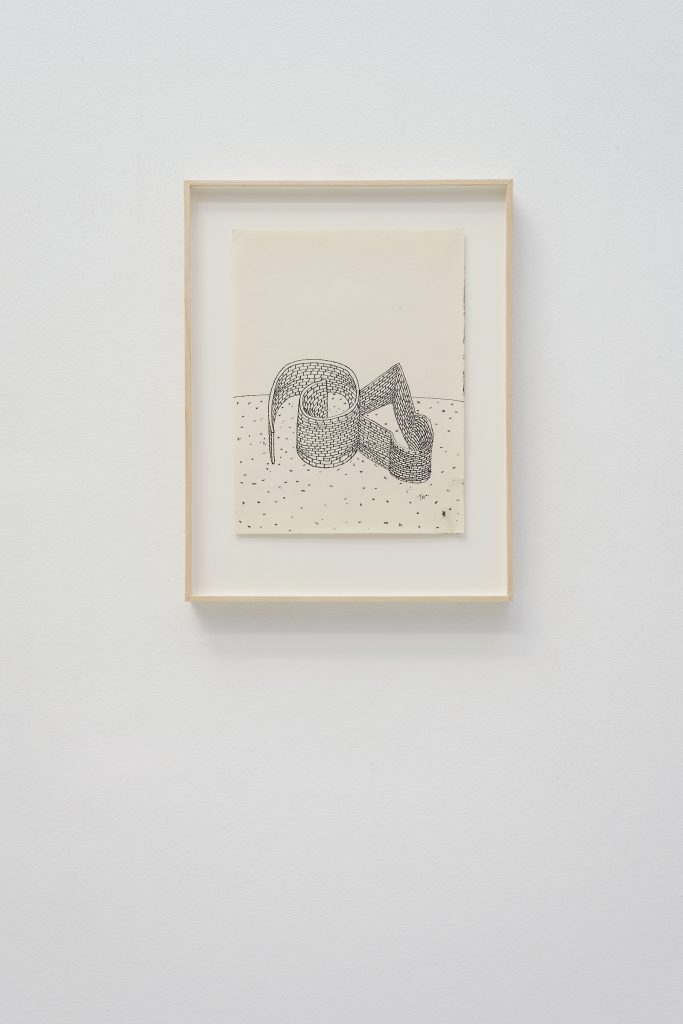
Construcciones
2022, Ink on paper. 38,5 x 30 cm
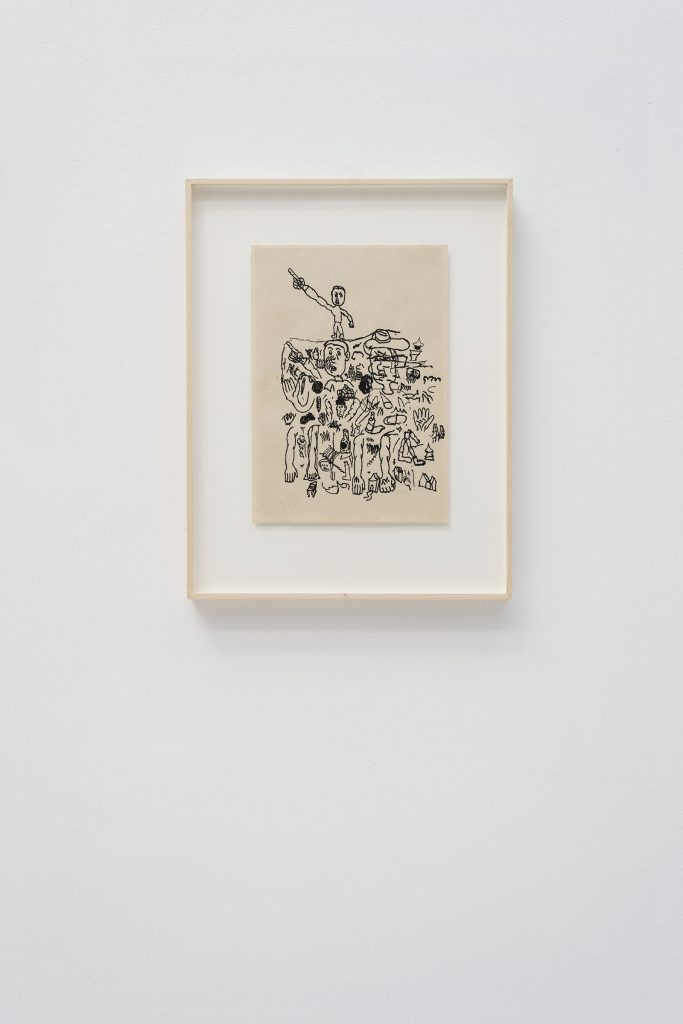
Untitled
2018, Ink on paper. 38,5 x 30 cm
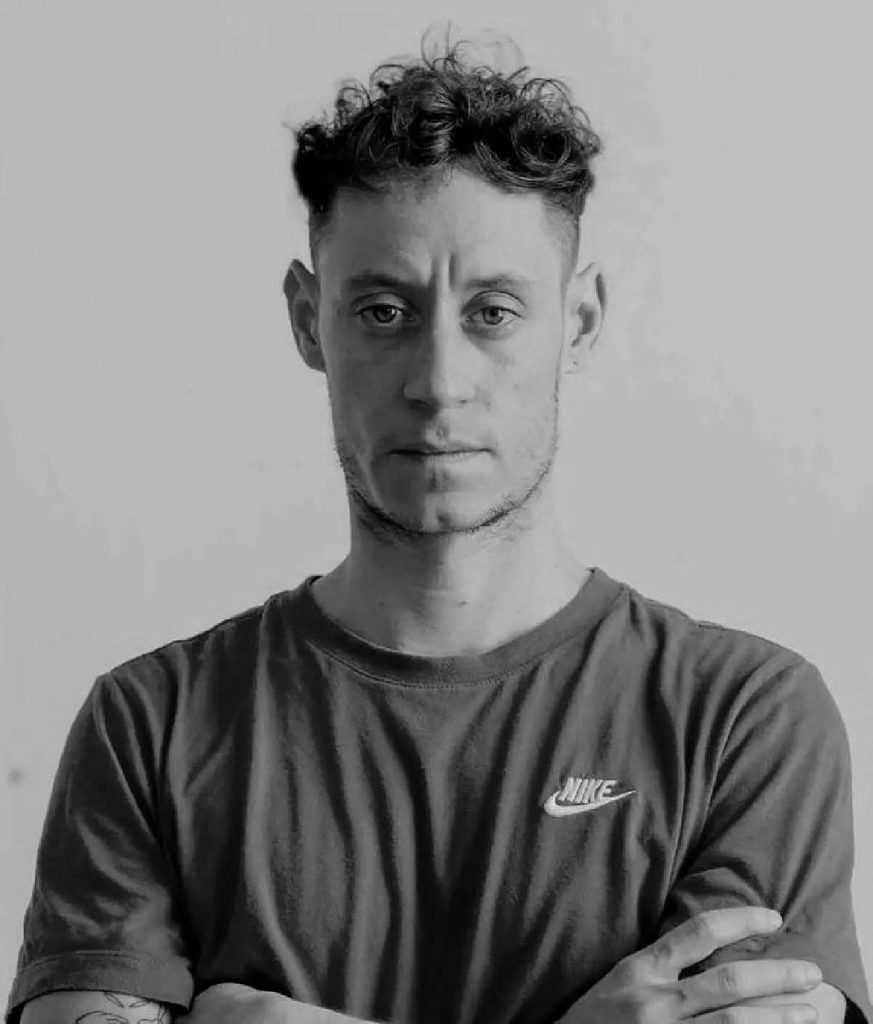
Jan Monclús (Lleida, Catalonia, 1987)
whose oeuvre depicts the implications of being a contemporary figurative painter nowadays, in a sort of Kantian exercise that puts in evidence the painter questioning the act of painting, Monclús presents oil on canvas works that mull over their own existence and concept. Highlighting the artist’s feelings at the studio, and the many challenges of being an artist.
CÓMO HABLAR DE PINTURA (O DEL PINTOR) SIN QUE SE NOTE
«The landscape does not exist; it must be invented.»
Henri Cueco.
When we talk about painting, particularly landscapes, we often avoid the obvious fact that artistic practice revolves around inventing something correctly. Representation, even if it aims for pure representation, has to pass through the filter of the mental or imagined state to distill and transfer the image onto whatever medium it may be. In this case, when discussing painting, we often become entangled and constantly distracted by the mere act of what it means to paint; how it is painted or, on the other hand, the resulting image hanging before our eyes. It’s worth noting here that the painting is always hanging, even if it is resting on the ground.
Jan Monclús’ painting is an endless monologue, revisiting itself again and again, as if when you go to ask your neighbor for salt, you encounter yourself. Monclús’ landscape carries that satirical contrast reminiscent of a Taika Waititi film: serious and colorful, humorous and sophisticated, grounded and imaginative.
The autonomy of his painting is uncontrollable, much like the growth of palm trees in Miami Beach, even though Jan Monclús hails from Lleida. The recurring intersections seem to forbid you from standing too far from the canvas, attempting to preserve its simplicity when it’s actually brimming with pictorial complexity, elegantly erected. All the while, for some inexplicable reason, we think about going back to smoking, even if we never have.
You only need to pause for a moment in front of this array of canvases to notice the overflowing brushwork, the skillful interplay of pictorial and verbal movement, a well-handled formal comedy: «I will paint a lot, I will paint a lot, […] but first I’m going to sleep.» This daydream is delivered to reality without working as a delivery person, on a good bike or brush, Monclús invites us to relax and enjoy a space of artistic relaxation and physical ease. There are no pretensions to create «serious art,» although everyone knows that nothing is more serious than humor.
Art critic Quico Rivas once said, «To write about painting with the same attitude as visiting a friend.» For this exhibition, Jan Monclús is revisiting that friendship, both with the practice and with the landscape.
However, as we’ve seen, painting is inseparable from the painter’s body, so ultimately, when we delve into his painting, we also enter and wander through him, as if it were a landscape, leaping over two-dimensional pedestals and traversing endless palm groves.
Elaido Aguilera
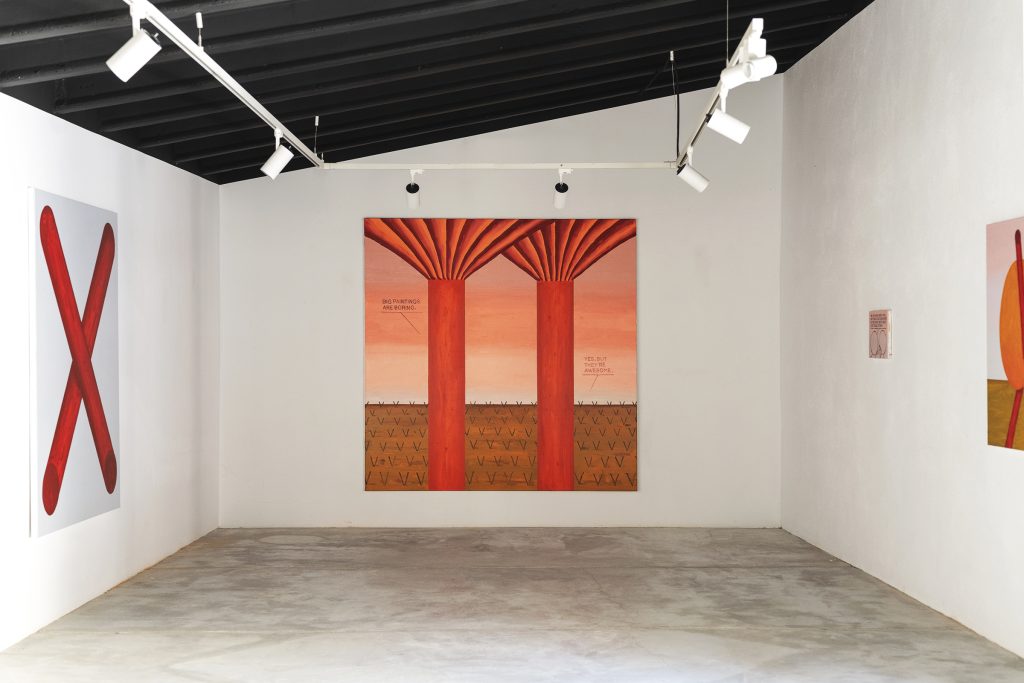
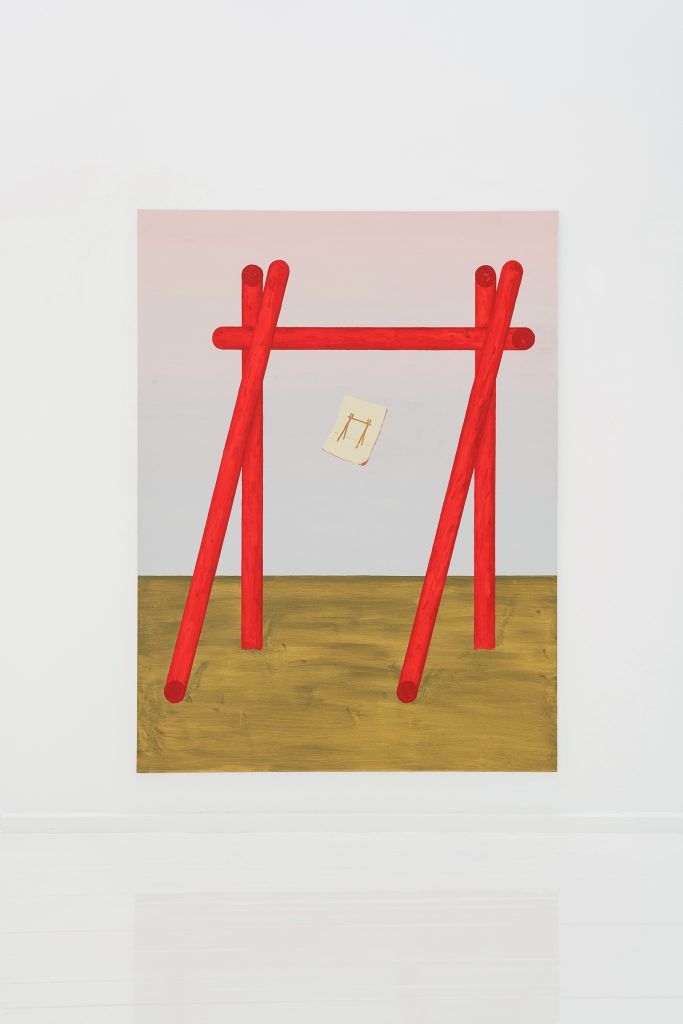
The perfect execution of a plan
2023. Oil on linen. 200 x 150 cm
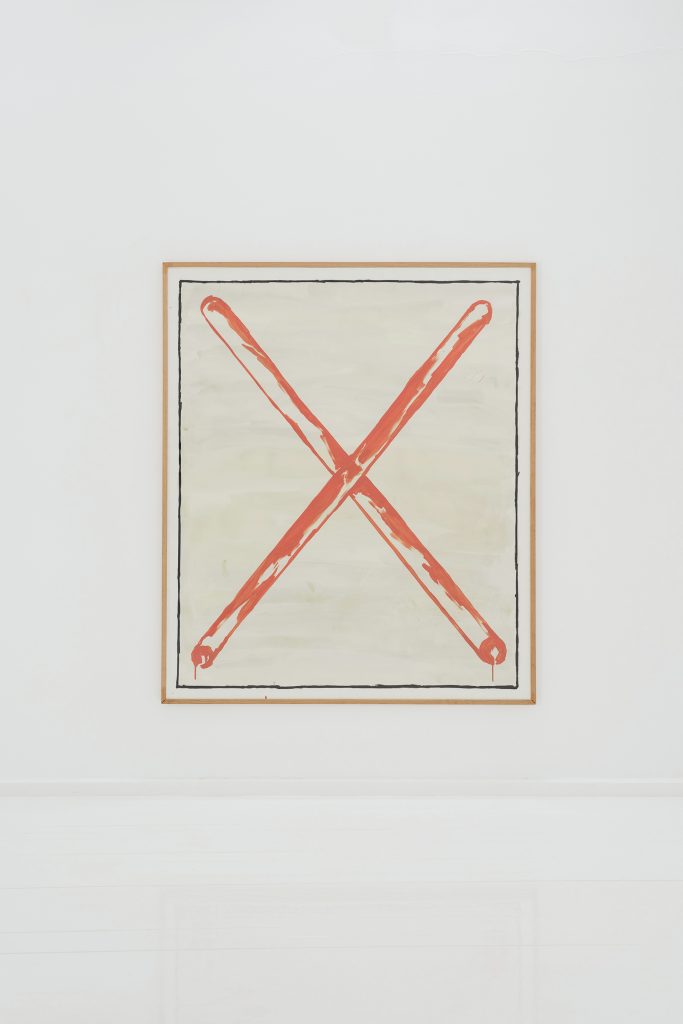
The Cross
2023. Oil on linen. 183 x 155 cm
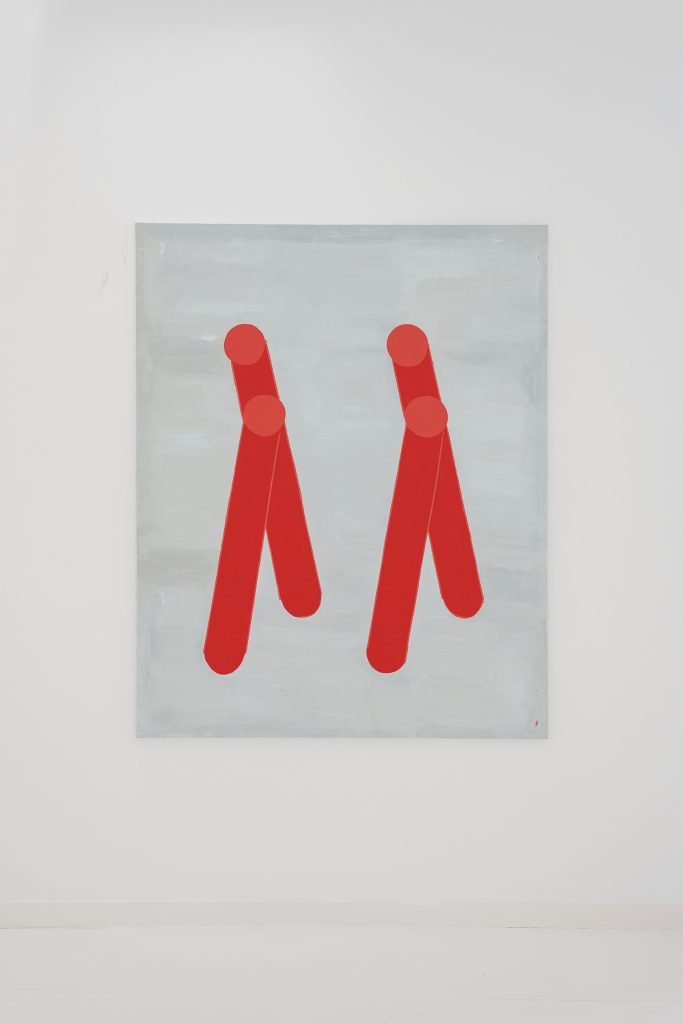
The Sketch
2023. Oil on linen. 162 x 130 cm

Yes, but…
2023. Oil on linen. 200 x 200 cm
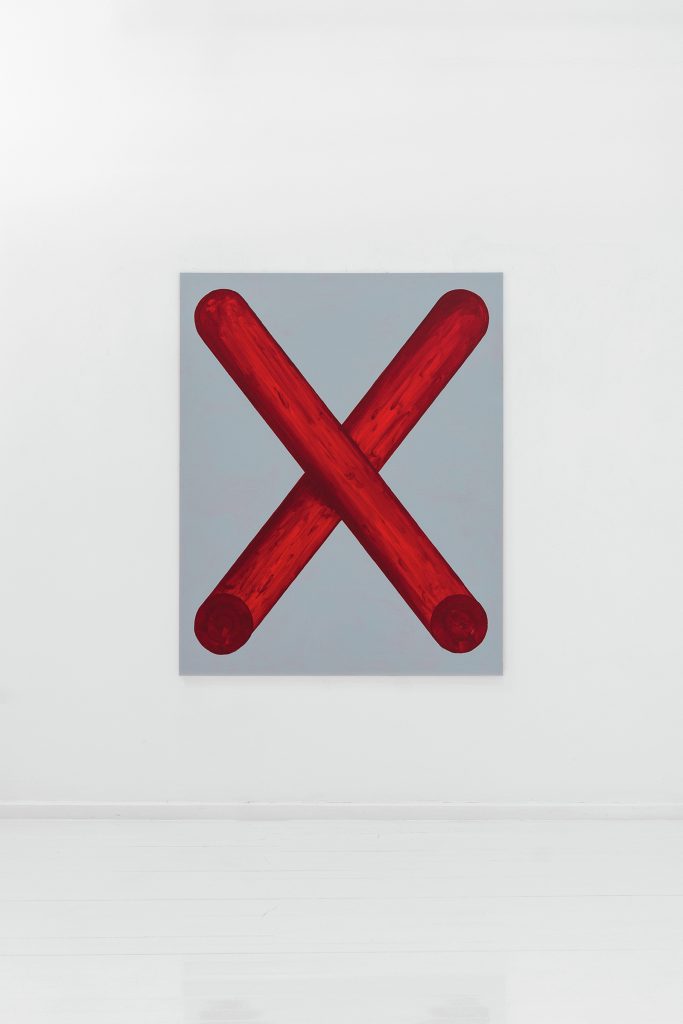
Blue
2023. Oil on linen.162 x 130 cm
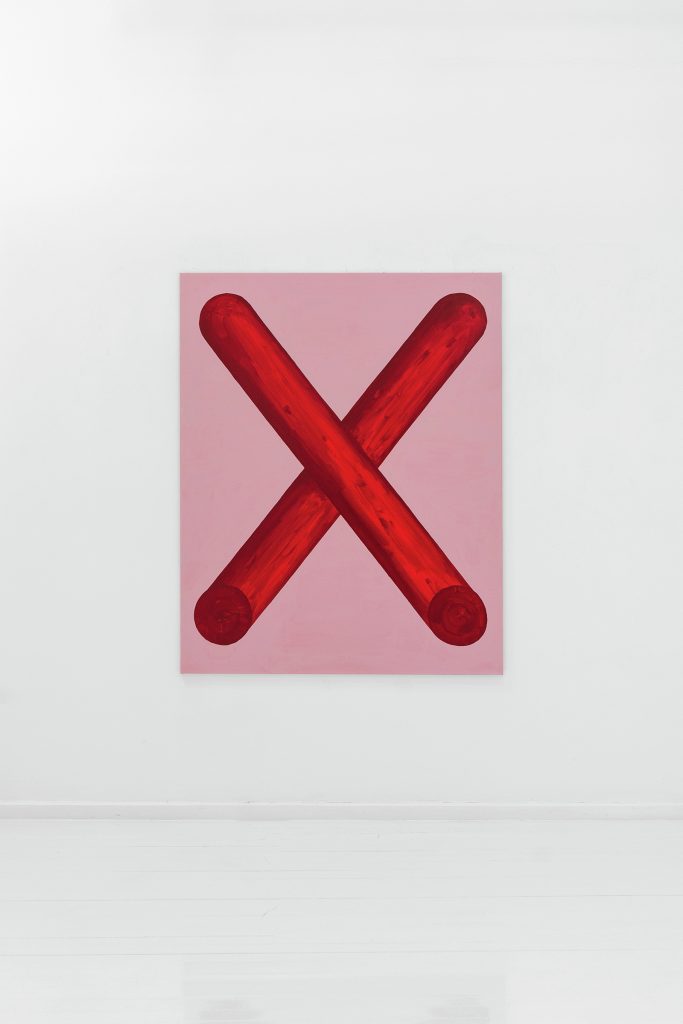
Pink
2023. Oil on linen.162 x 130 cm
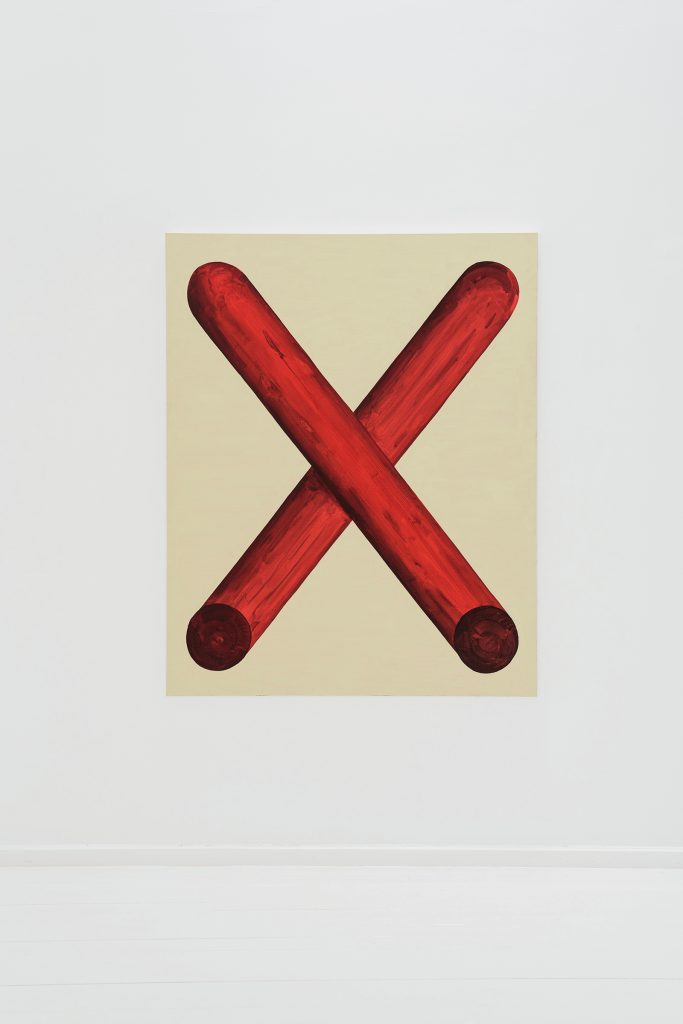
Green
2023. Oil on linen.162 x 130 cm
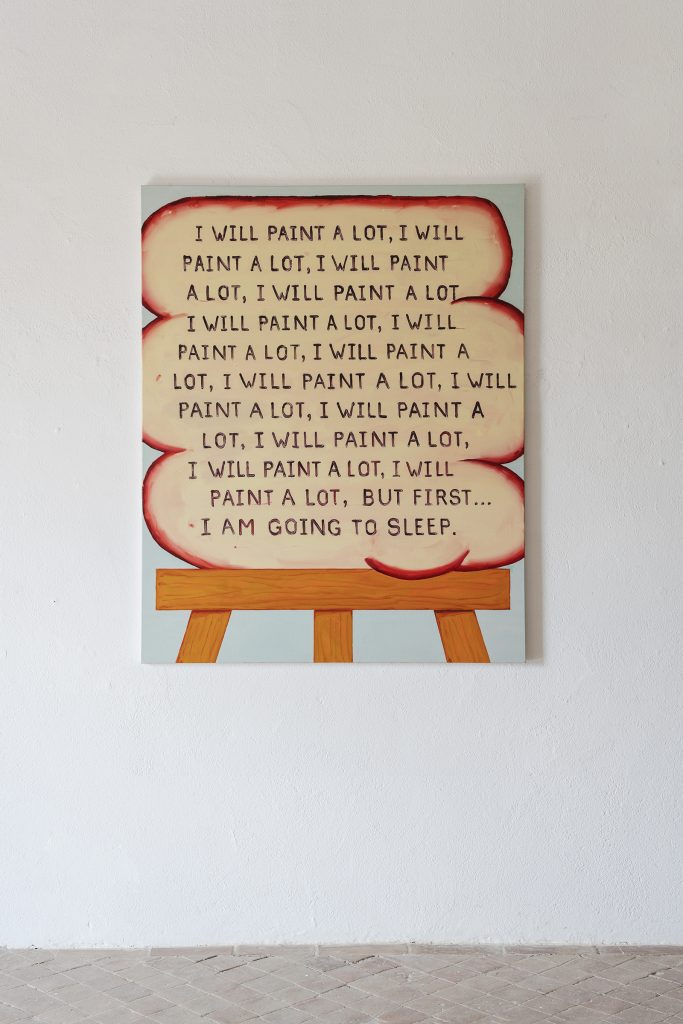
But first…
2023. Oil on linen. 162 x 130 cm
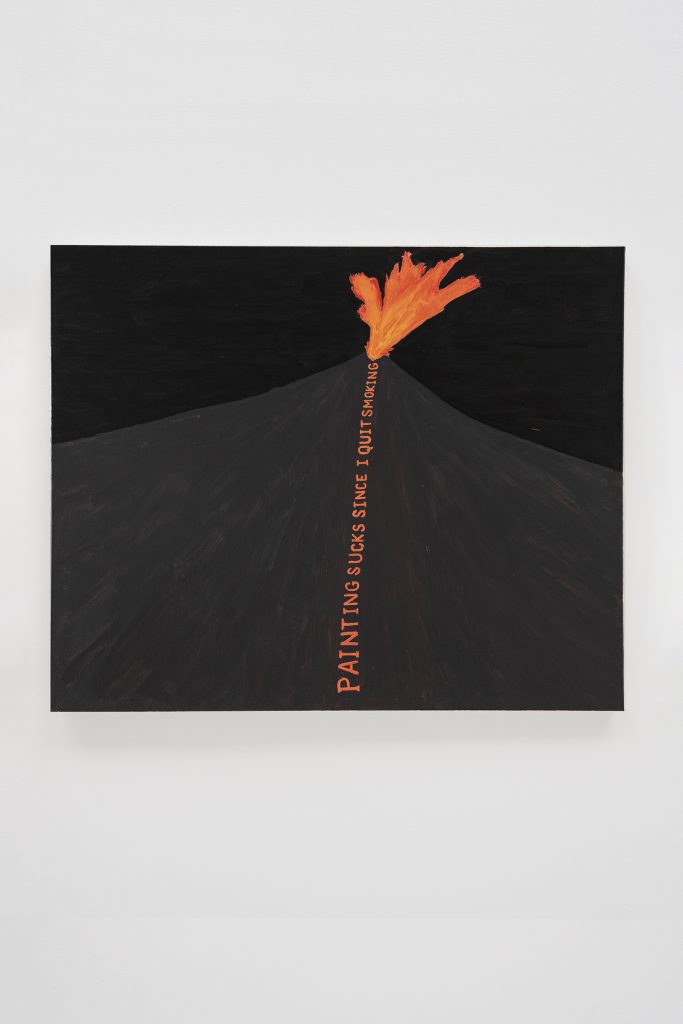
Painting sucks since I quit smoking
2023. Oil on linen. 81 x 100 cm
The ritual
2023. Oil on linen. 100 x 81 cm
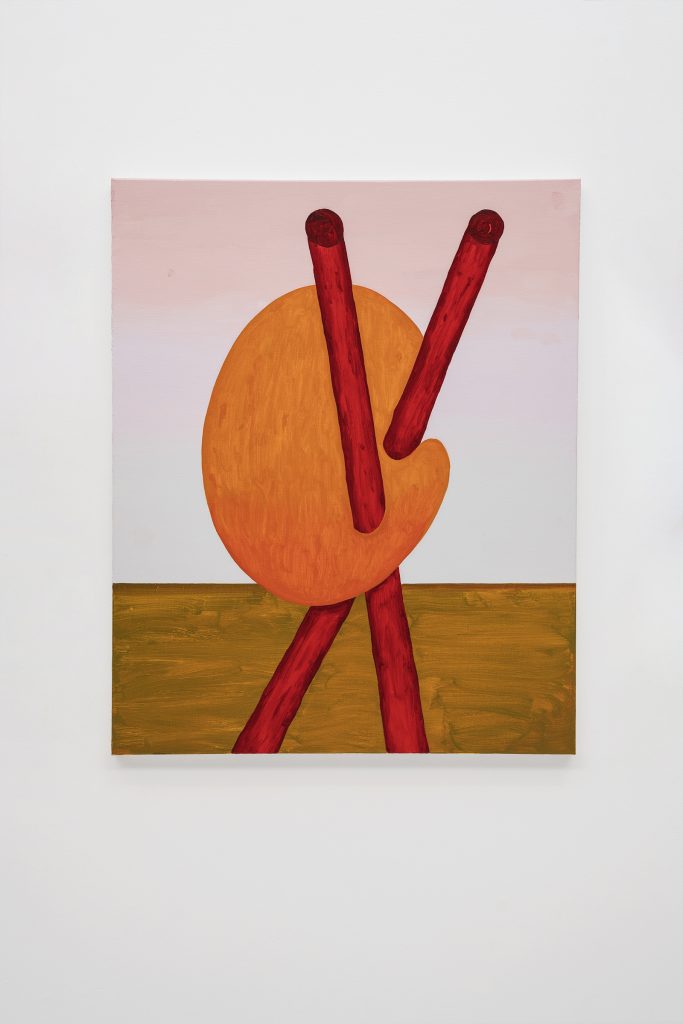
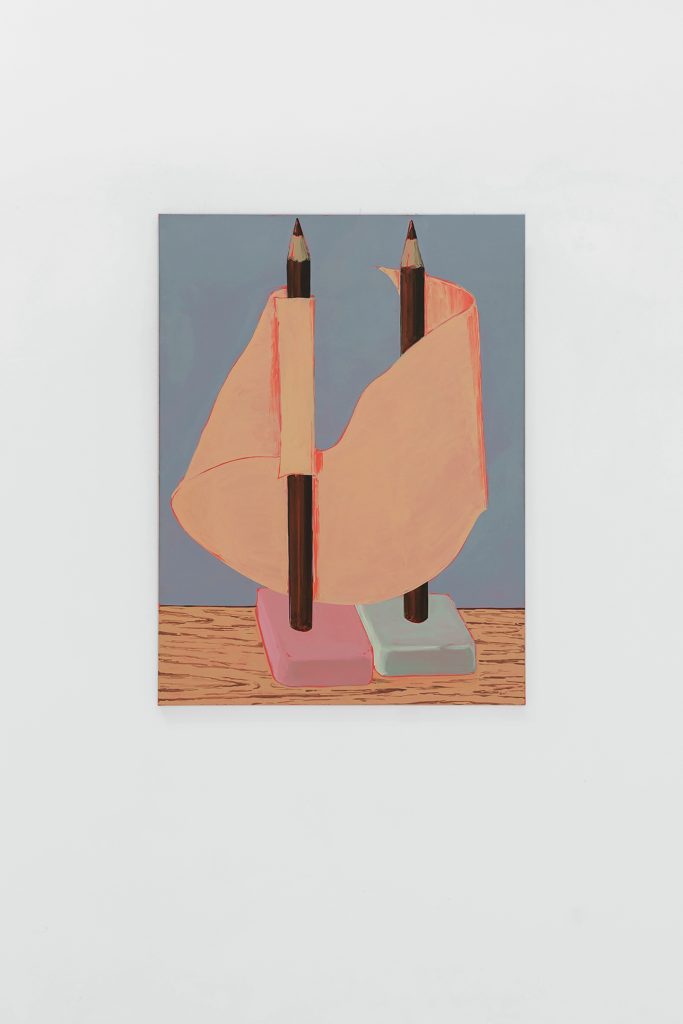
Bublle Talk
2019. Oil on linen. 130 x 97 cm
The message
2017. Oil on linen. 130 x 97 cm
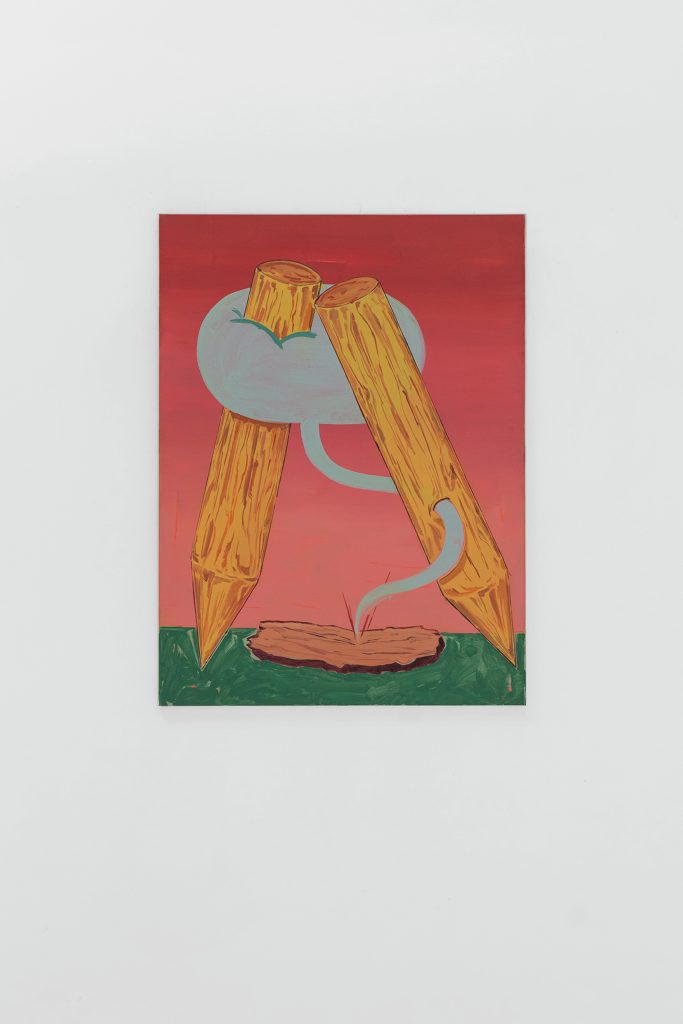
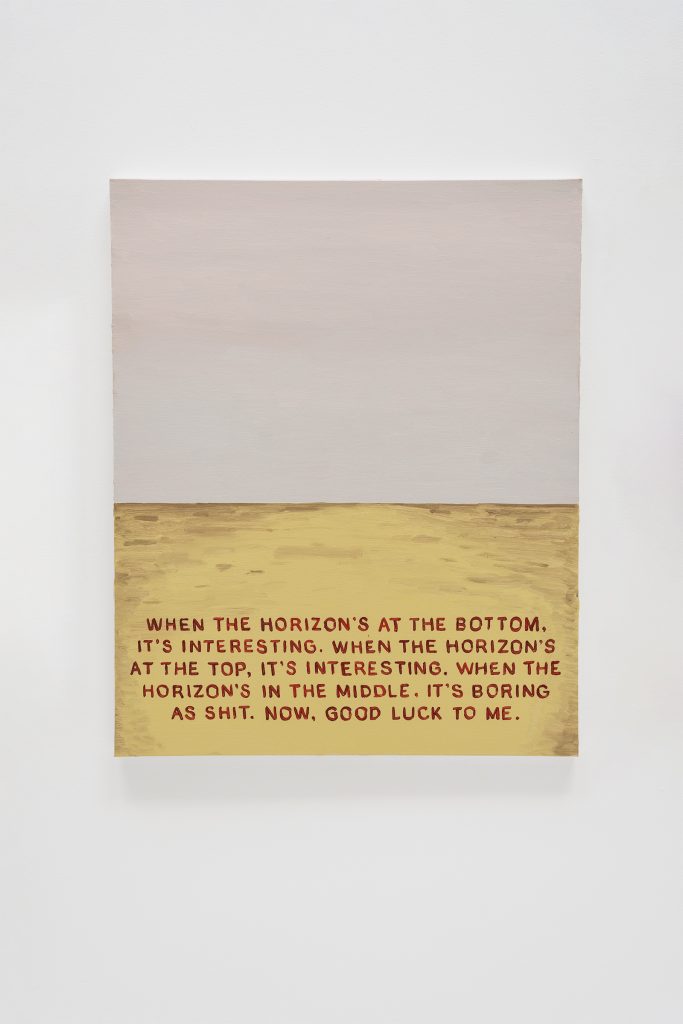
Good luck to me
2019. Oil on linen. 100 x 81 cm
The sight
2017. Oil on linen. 70 x 60 cm
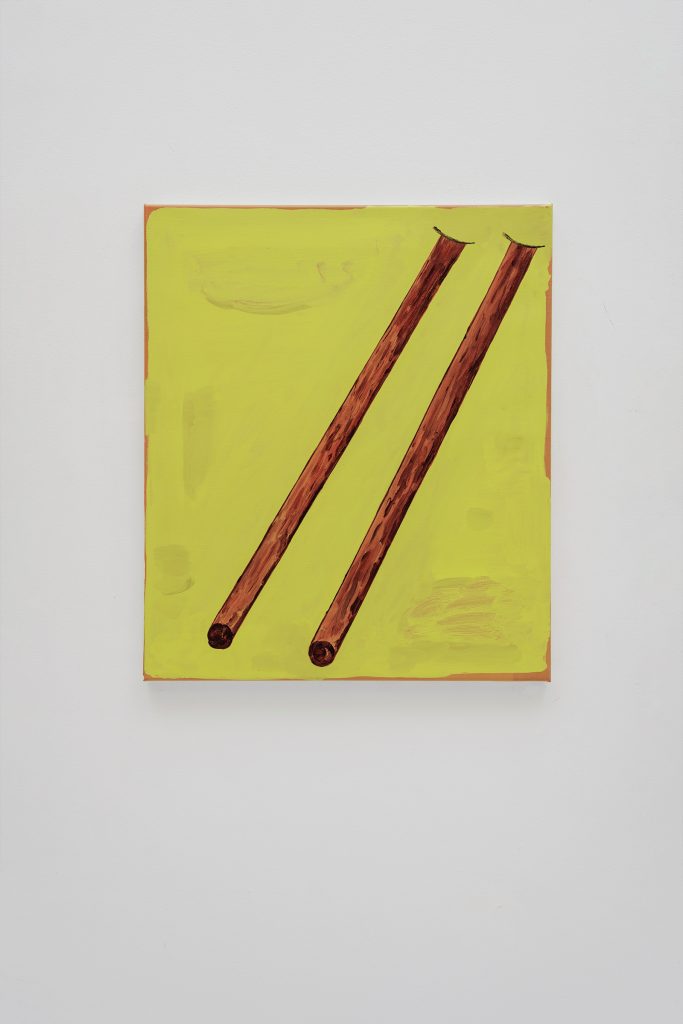
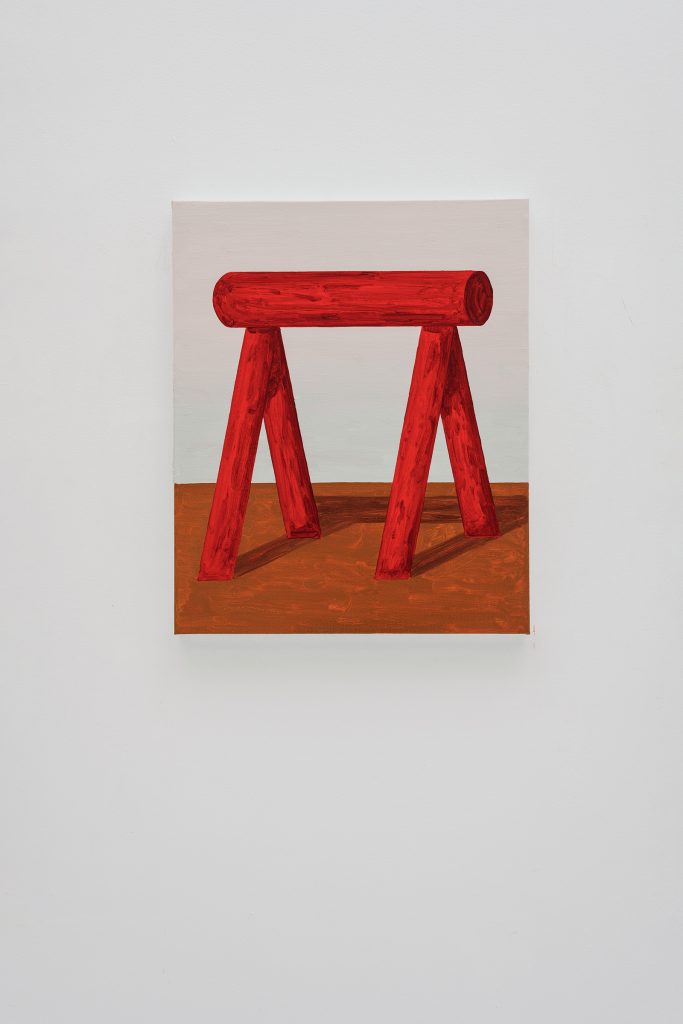
Still there (the rival)
2023. Oil on linen. 73 x 60 cm
Display #1
2023. Oil on linen. 61 x 50 cm
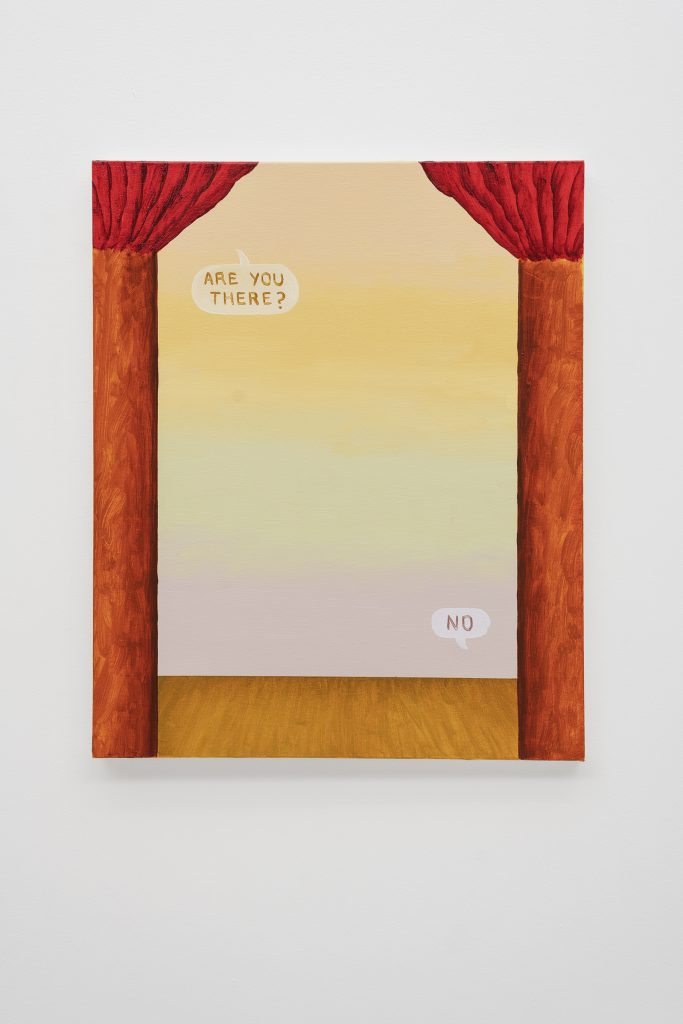
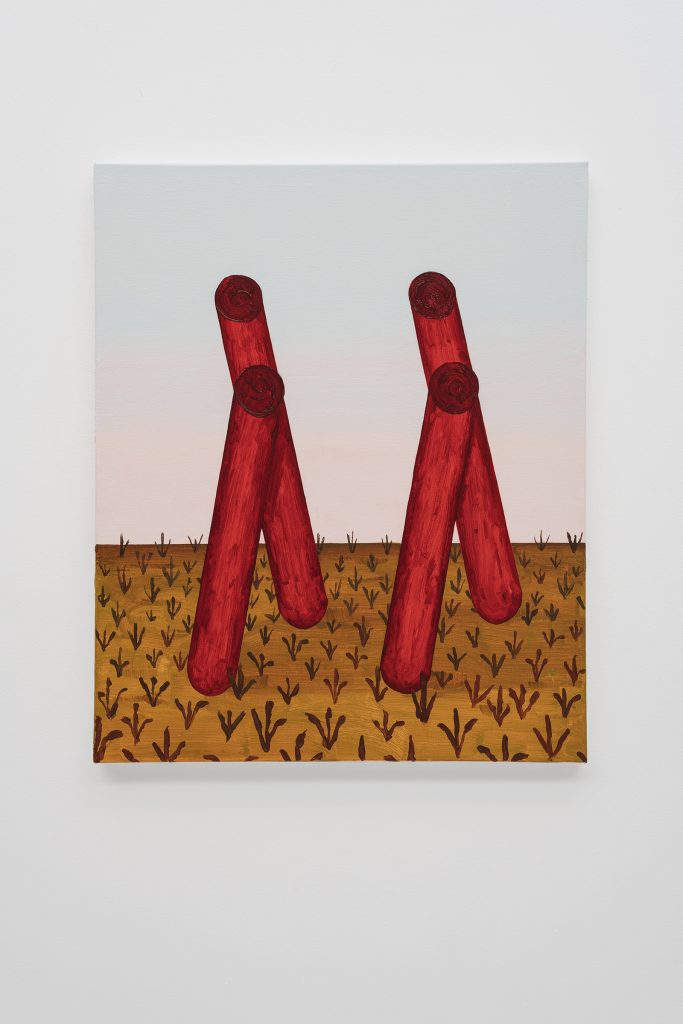
The walk
2023. Oil on linen. 73 x 60 cm
The secret
2017. Oil on linen. 22 x 35 cm
